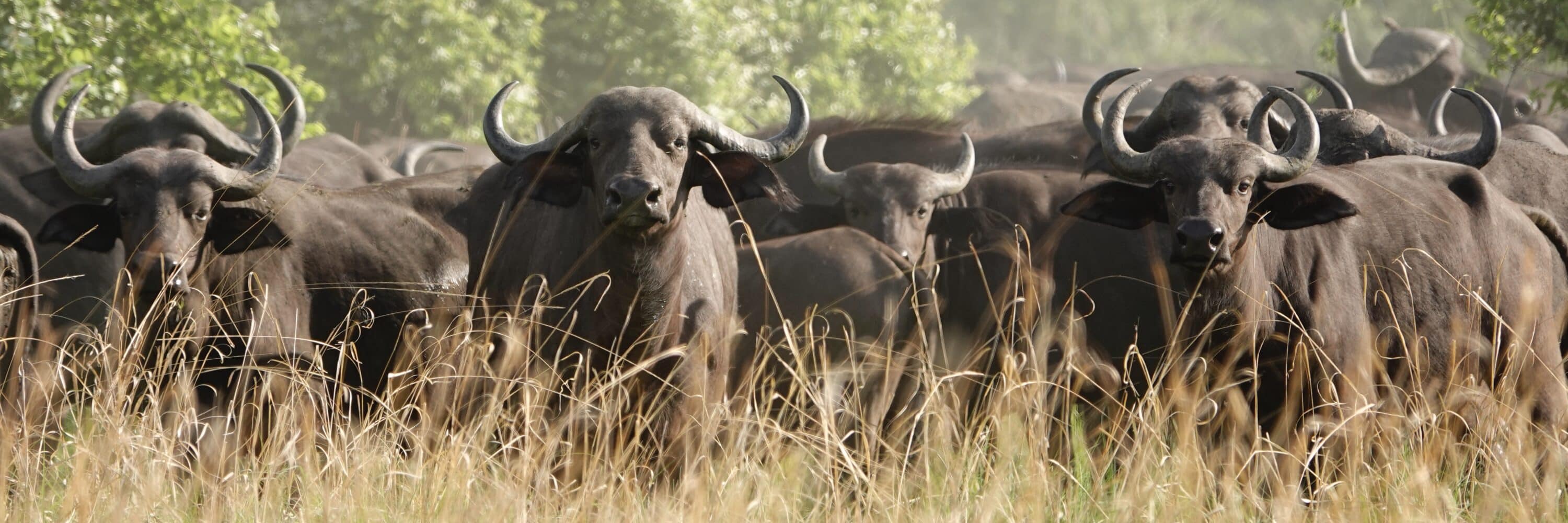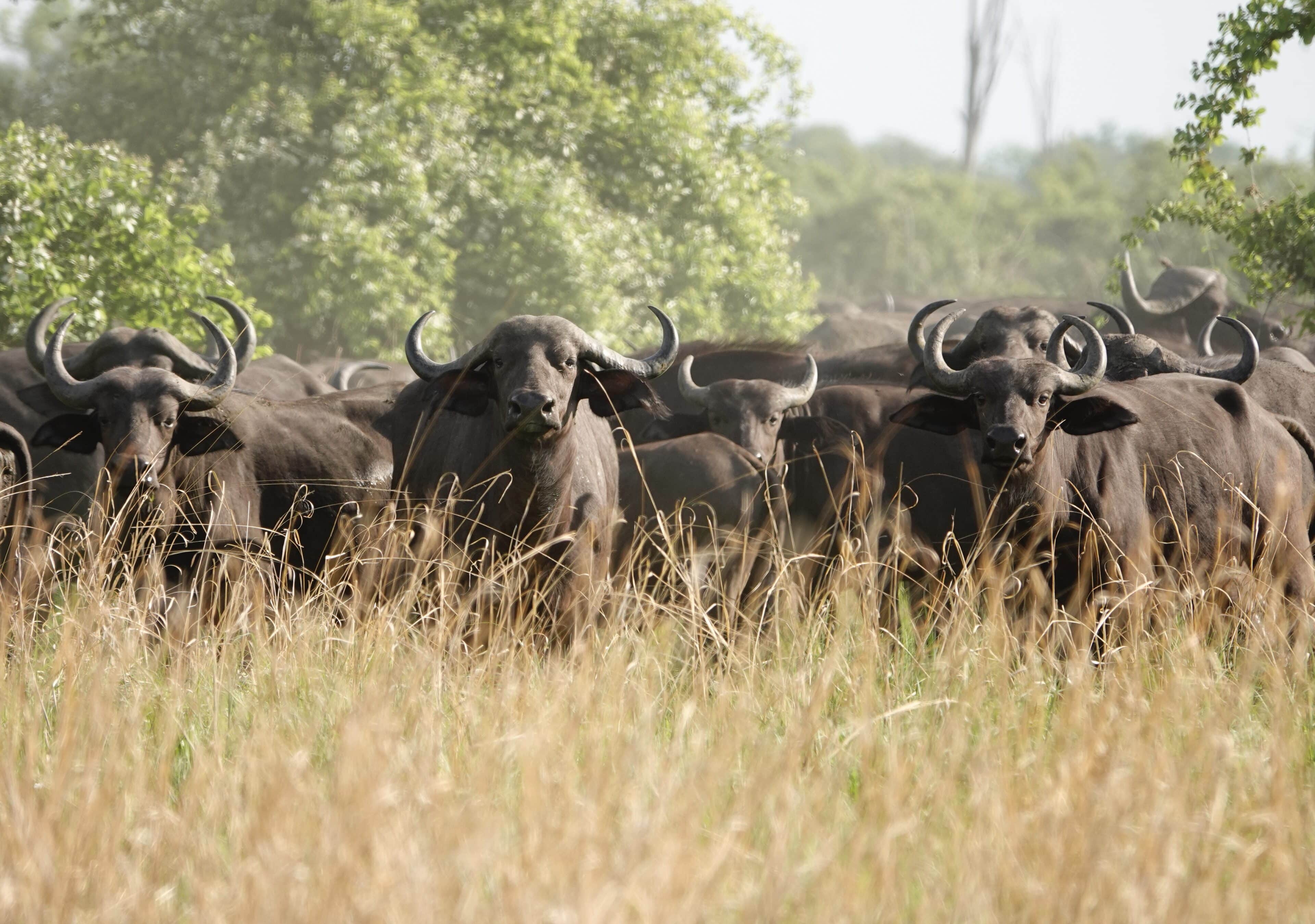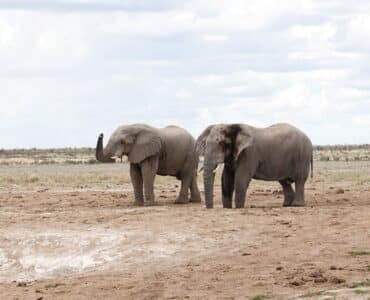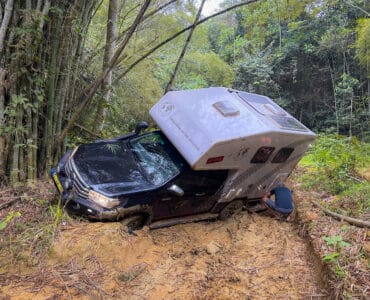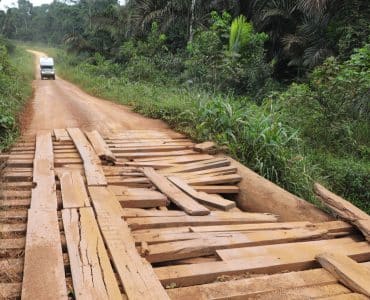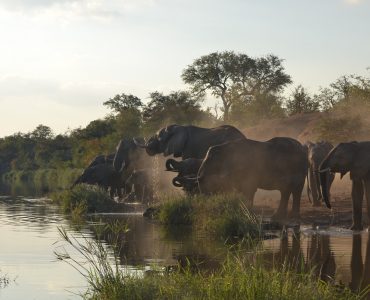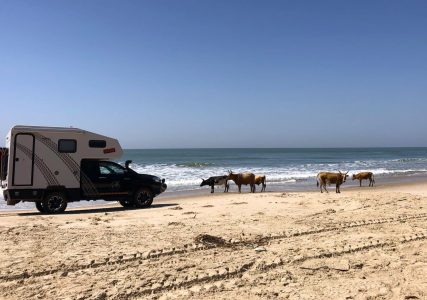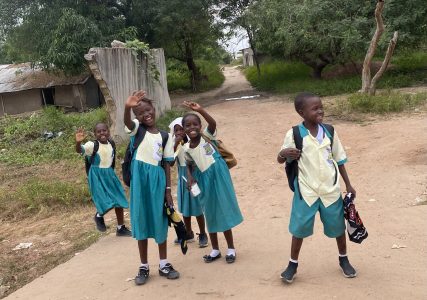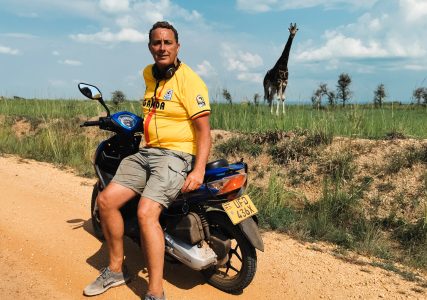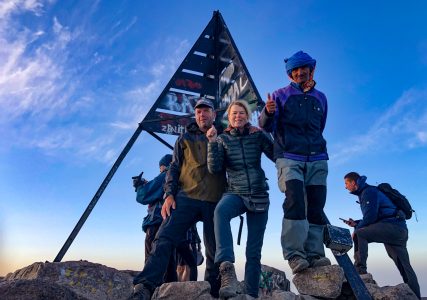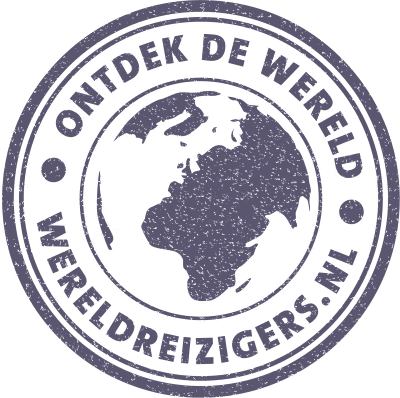We continue our overland tour Africa in Zambia. We (Cor and Grietje from NoFear Travel), travel with our Toyota Hilux 4×4 camper. The African continent is the Mecca for 'overlanding' with many challenging routes and beautiful destinations. The first African country we visited during our trip to South Africa is Morocco, followed by Mauritania, Senegal, Mali, Guinea, Sierra Leone, Liberia, Ivory Coast en Ghana. After a stopover in the Netherlands, we continue our overland journey through Africa. We drove on Togo, Benin, Nigeria, Cameroon, Gabon, Congo-Brazzaville, riding a Angola.
Now it's time for our experiences in Zambia. As you are used to from us, you now start watching the video again.
Plan your holiday to Africa here
- Itineraries you can compare + request quotes Africaplus, Africa tailor-made, Djoser, king monkey, rickshaw travel, sawadee en shoestring.
- Flight tickets for Africa you book through Skyscanner.
- Hostels, Hotels and Resorts in Africa you book Booking.com.
- Rental cars : Sunnycars en rental cars.
- Tours and Activities in Africa you book through GetYourGuide.
- travel items such as suitcases, bags and more you can buy at Bol.com.
- SIM cards for Africa you buy extra International sim.
- Parking at the airport you can arrange via Parkos, park care of iParking.
About Zambia
Zambia, a country in southern Africa which is completely surrounded by other countries and therefore has no direct connection to the sea. Until 1964 the country was called Northern Rhodesia, but at the time of independence from the United Kingdom the name was changed to Zambia.
The country is about the size of France and has almost 20 million inhabitants, of which almost 3 million live in the capital Lusaka. A large part of the population lives in poverty. Many residents are self-sufficient in agriculture. State income is derived from the copper industry and partly from tourism. An important asset is the world-famous ones Victoria Falls, a world heritage site not to be missed. The country is also known for a few beautiful national parks.
Zambia, bring it on!
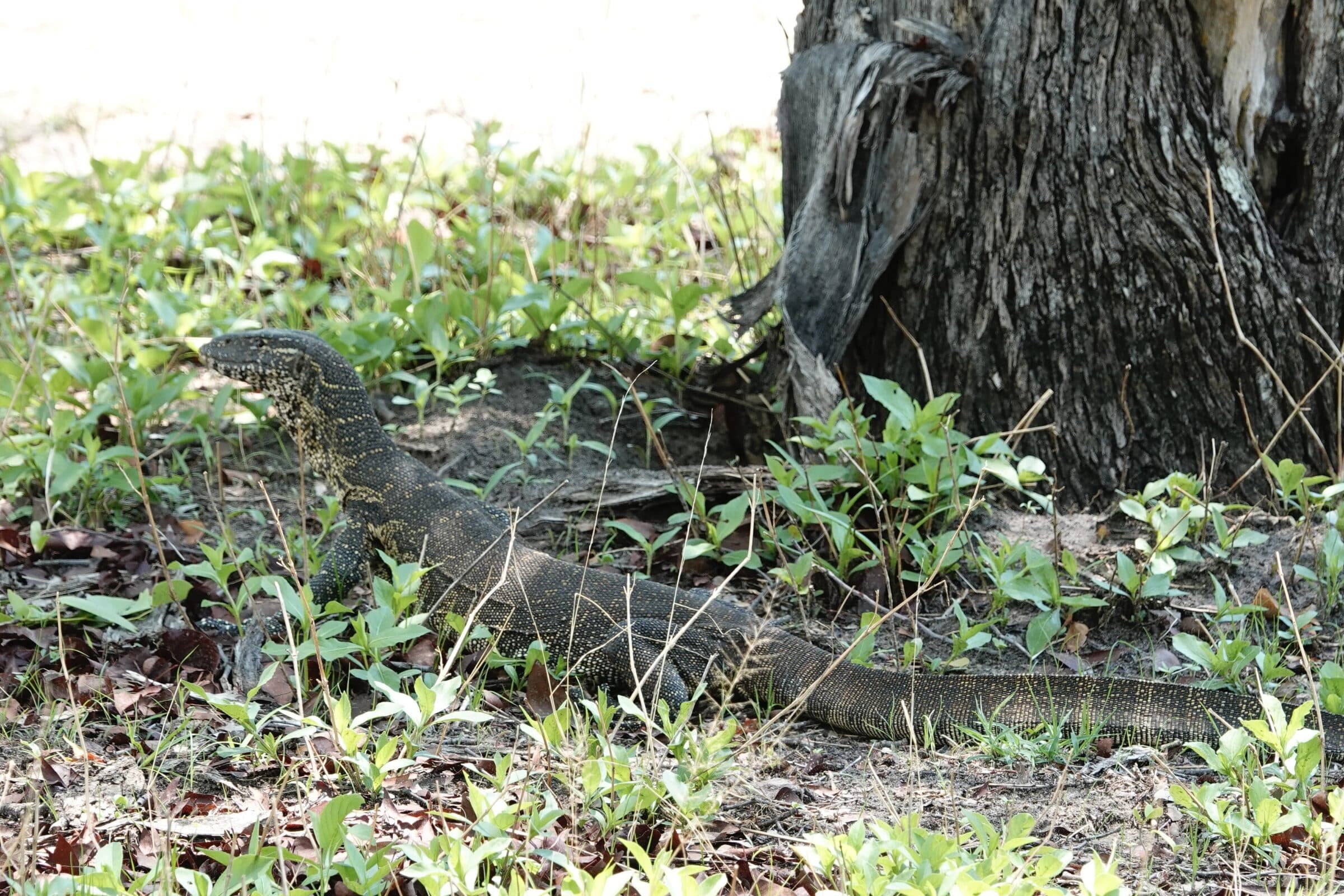
Overlanding in Zambia
1. Cross the border
We start our overland journey and discovery tour at the border crossing Katima Mulimo. Check-out on the Namibian side is smooth and friendly.
Checking in on the Zambian side takes more time. We have to go to various counters to stamp, buy insurance or pay road tax and carbon tax. At the border we can exchange money and buy a SIM card, so that we can enter the country fully prepared.
Our first destination is the Victoria Falls near the town of Livingstone.

2. Livingstone
David Livingstone (1813–1873) was a Scottish explorer with a preference for southern Africa. The capital of the southern province, which was created in 1904, is named after him. Initially he was sent as a missionary to preach the Bible. But his travels increasingly took on the character of discovering southern Africa. He was the first European to discover the Zambezi River and the Victoria Falls. He also became acquainted with the slave trade of the time and published extensively about it.
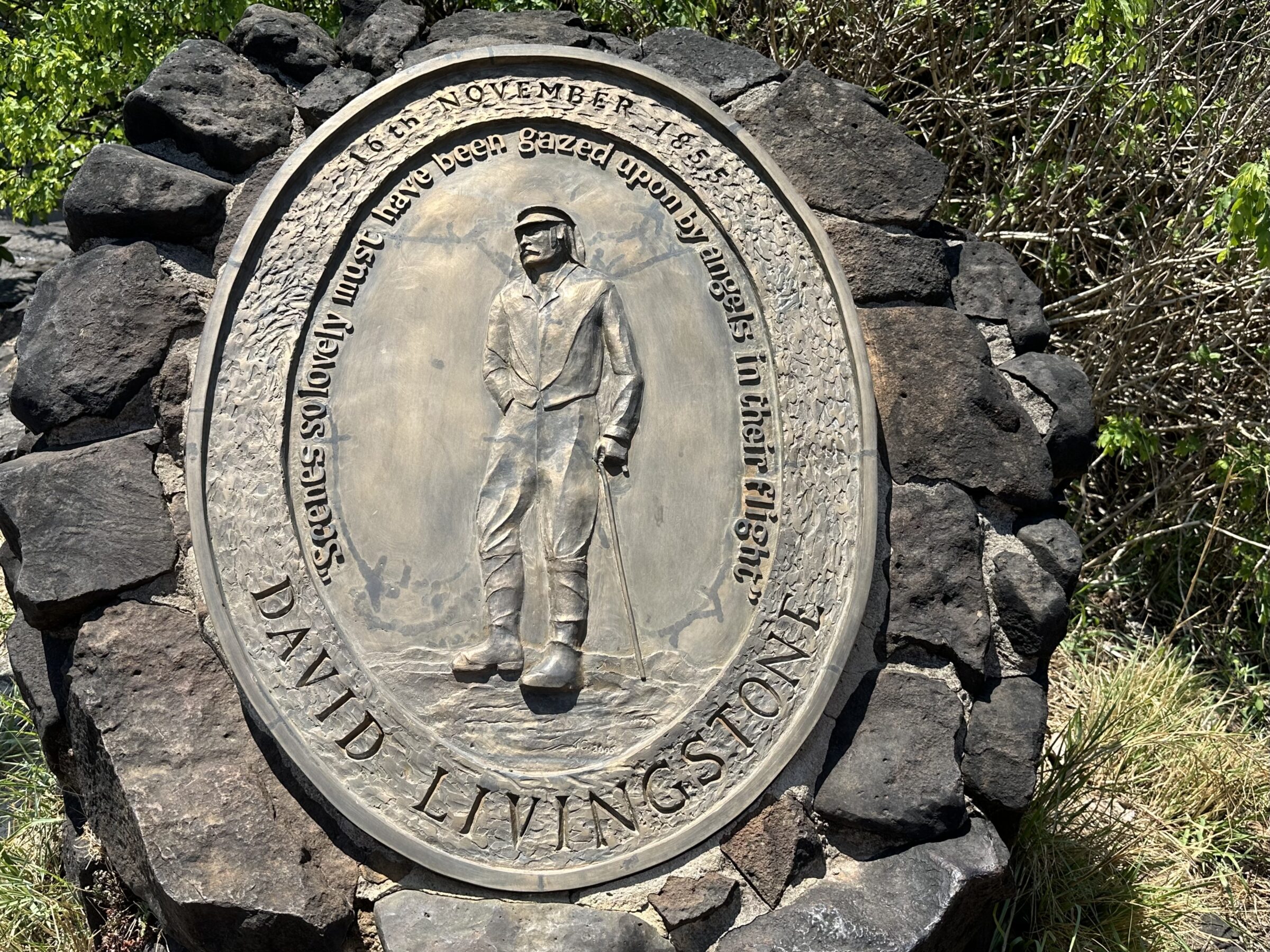
There are many anecdotes about David Livingstone, including that his heart, lungs and intestines were buried in Chitambo, Zambia, and the rest of his body was buried in Westminster Abbey, among other luminaries. We - as modern travelers - are inspired by a man like Livingstone.
3.Victoria Falls
The “Victoria Falls” as they are called in English are, in one word, “amazing”. Of course we had already heard and read a lot about it, but an actual visit makes you silent! The Victoria Falls are located in the Zambezi River which is the fourth largest river in Africa in terms of length. The river flows from west to east and ends via Mozambique in the Indian Ocean. So we will encounter him more often.
The Victoria Falls are a tourist highlight that is worth a visit. Everything around the waterfalls is designed to give the many visitors a “once in your lifetime” feeling. Many luxury lodges and hotels are available to tourists and you can book as many tours as your heart desires.
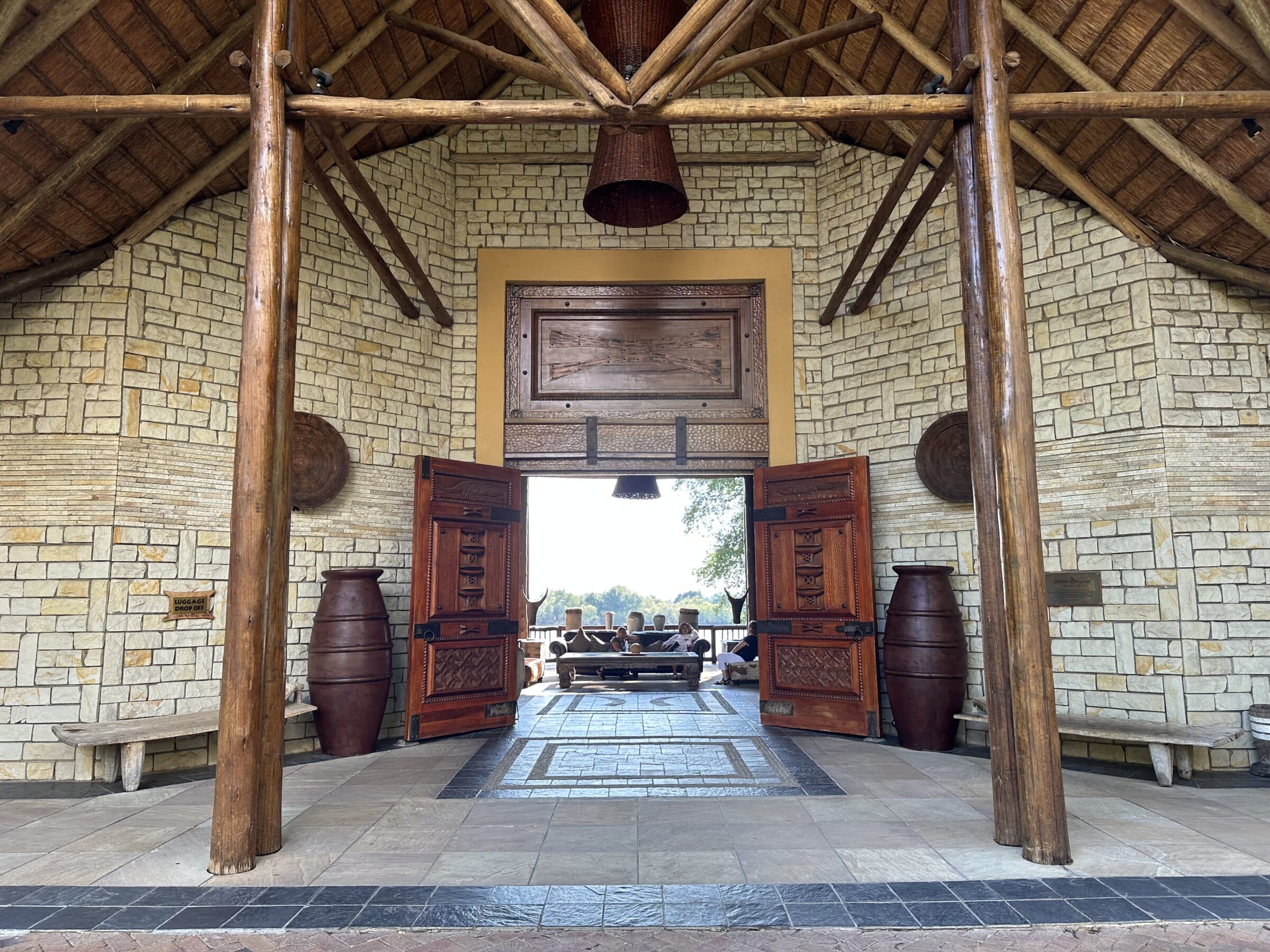
With a helicopter over the Victoria Falls, with an ultralight aircraft, walking, canoeing, rafting, bungee jumping, you can't imagine anything so crazy.
4. Devil's Pool | Victoria Falls
One of the most challenging ways to discover the waterfalls is the Devil's pool, really something for us! We book this tour at the campsite where we are staying. Cost, $125 per person, for 10 minutes of swimming…well, go ahead.
From our starting point we are warmly welcomed with a drink. It all looks neat. We are in a group of 10 people and receive a short briefing. To get to the Pool, you take a fast boat another mile or so across the river before arriving at the top of the falls, where the Devil's Pool is located.
The boat trip is an attraction in itself. Beautiful to see how the skipper maneuvers at high speed between the rocks without damaging his propeller. Arrived at Livingstone Island it's going to happen. We hand in our phones so that one of the super friendly guides can take photos on your own device.
We have to swim a short distance along a rope to get to the actual Devil's Pool, the place where the water falls over the edge about 100 meters.
We can look over the edge and see how the water splashes down. On your stomach, on your back, on your side with a guide who, just to be safe, grabs you by the ankles.
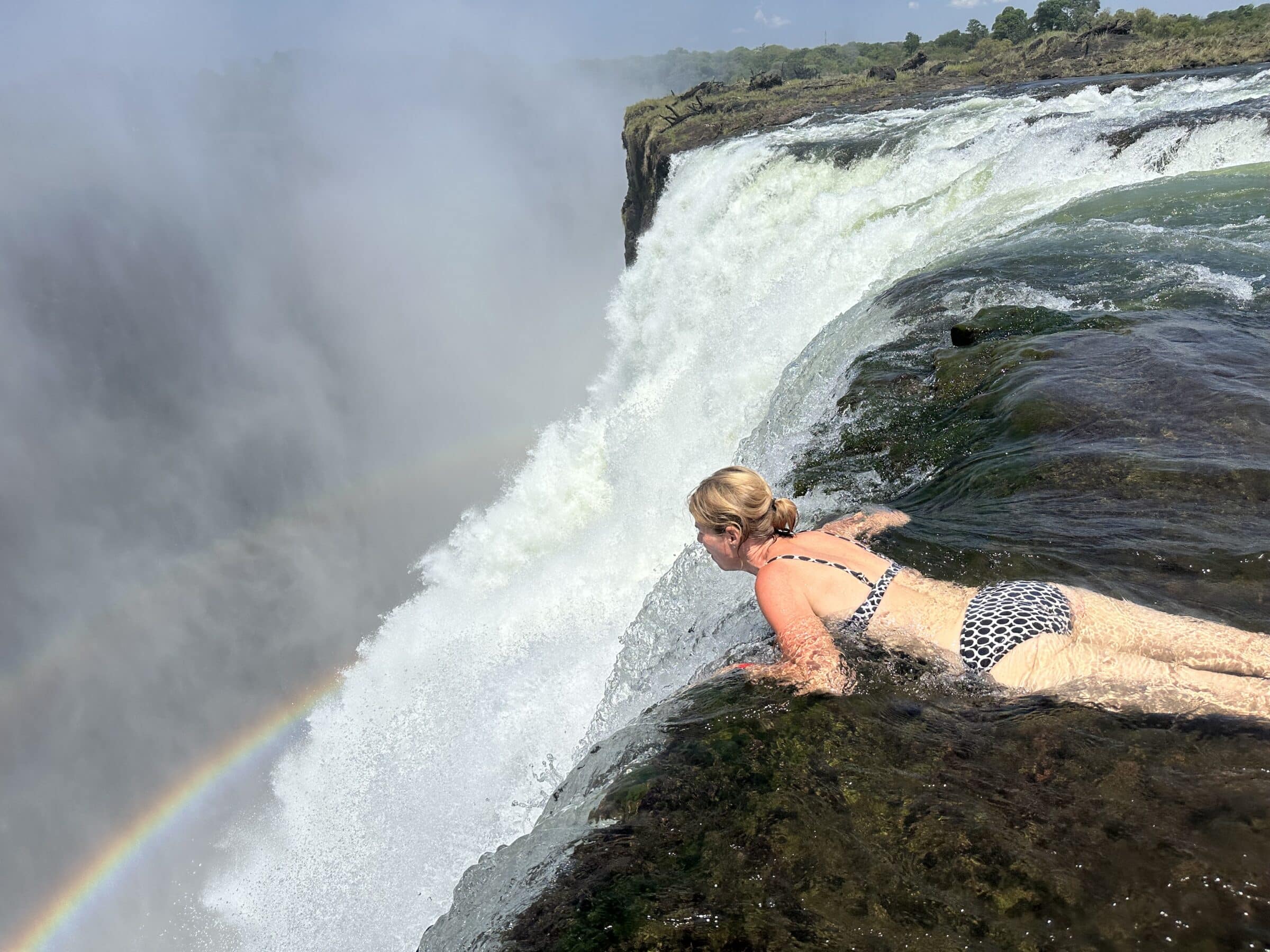
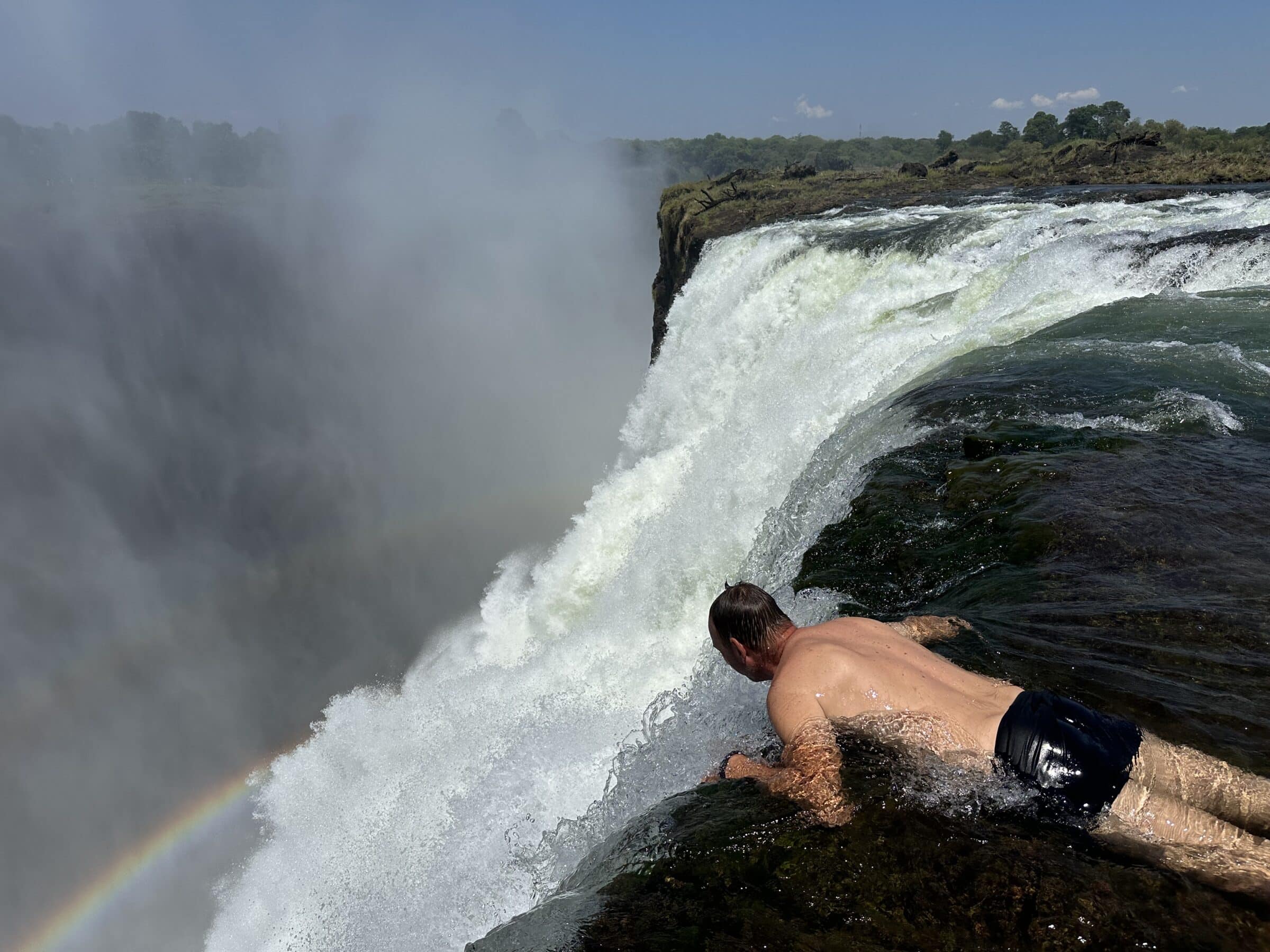
The experience is amazing, below you see the water splashing against the rocks with enormous force while multiple rainbows form. In the less adventurous part of the pool we are allowed to swim around for a while while the small fish cling to our skin.
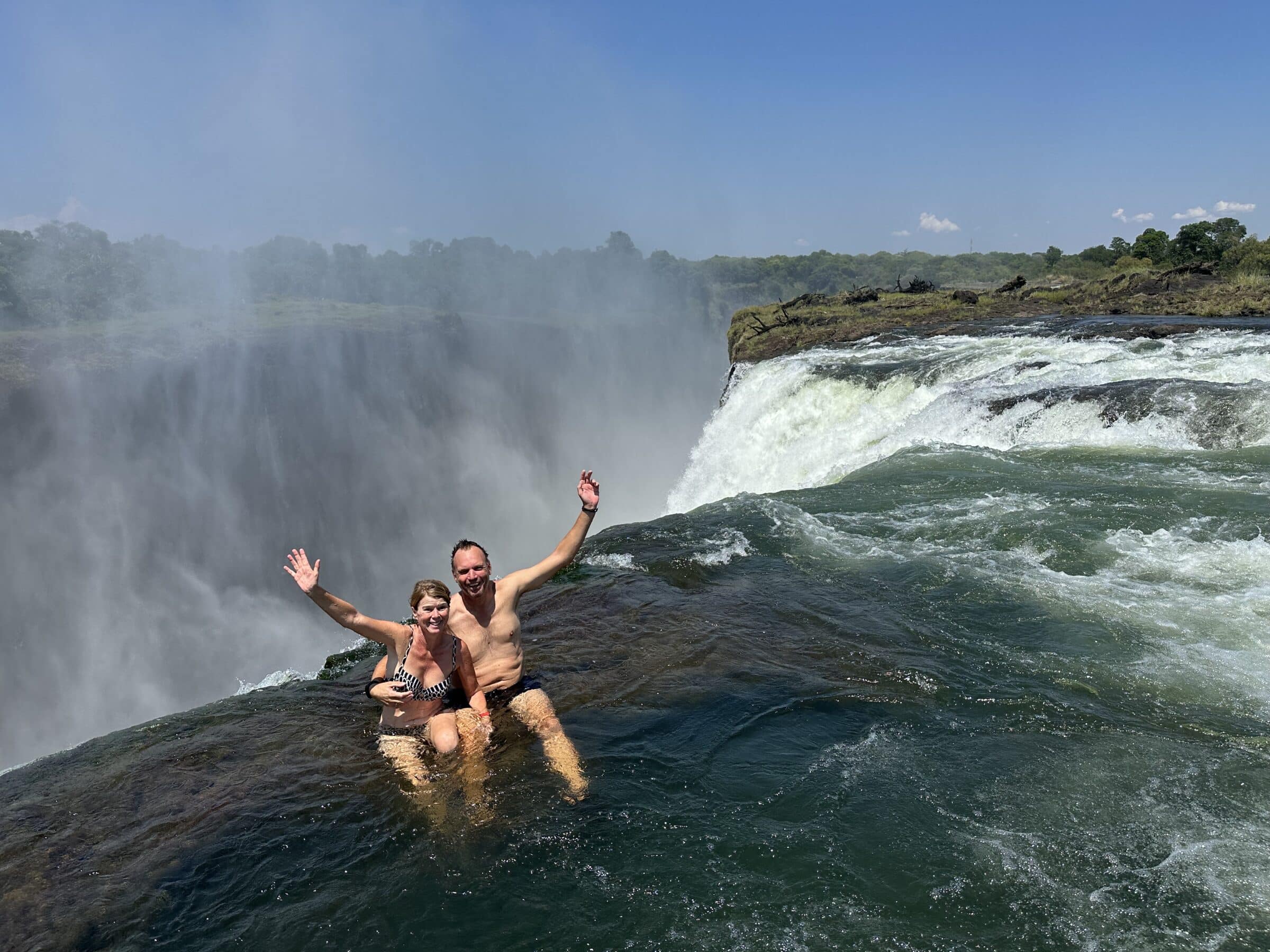
Recovered from the experience, we are given a towel and we return to the speedboat. A fantastic table has been set up where we can enjoy a delicious breakfast with the group.
All in all, in our opinion, well worth the money! A wonderful experience, with professional, friendly guidance and a delicious breakfast.
Also read: Victoria Falls | The ultimate waterfall for your bucket list
5. The park | Victoria Falls
The park of Victoria Falls where you can just walk and enjoy the views is also very worthwhile. An entrance ticket costs 20 dollars and you can walk around freely as long as you want. The park offers the most beautiful views of the waterfalls, so you can photograph the spectacle from multiple sides.
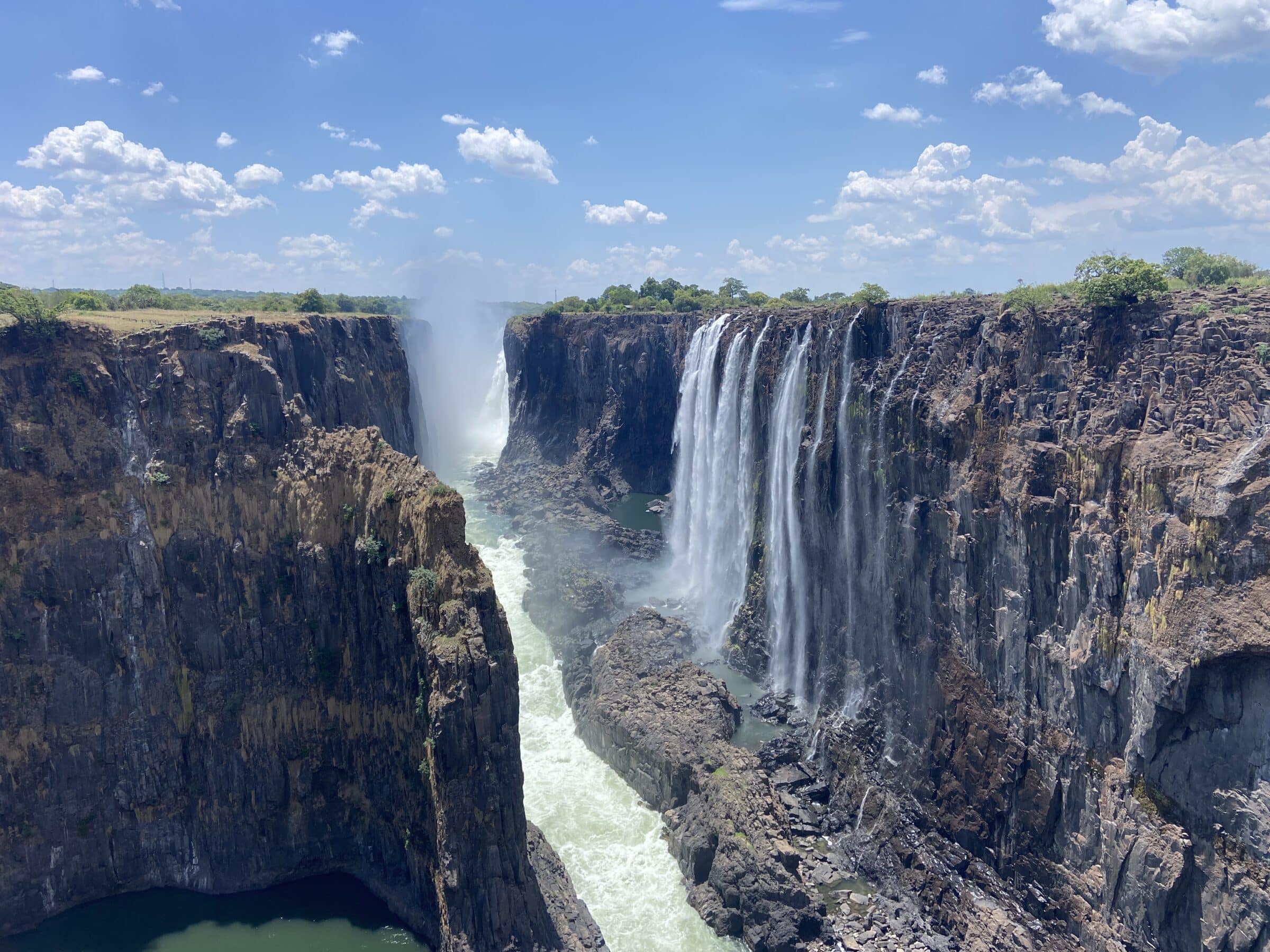
At the parking lot you will find various shops and restaurants where Zambians try to earn some money with a lot of handmade art. Also very worth it!
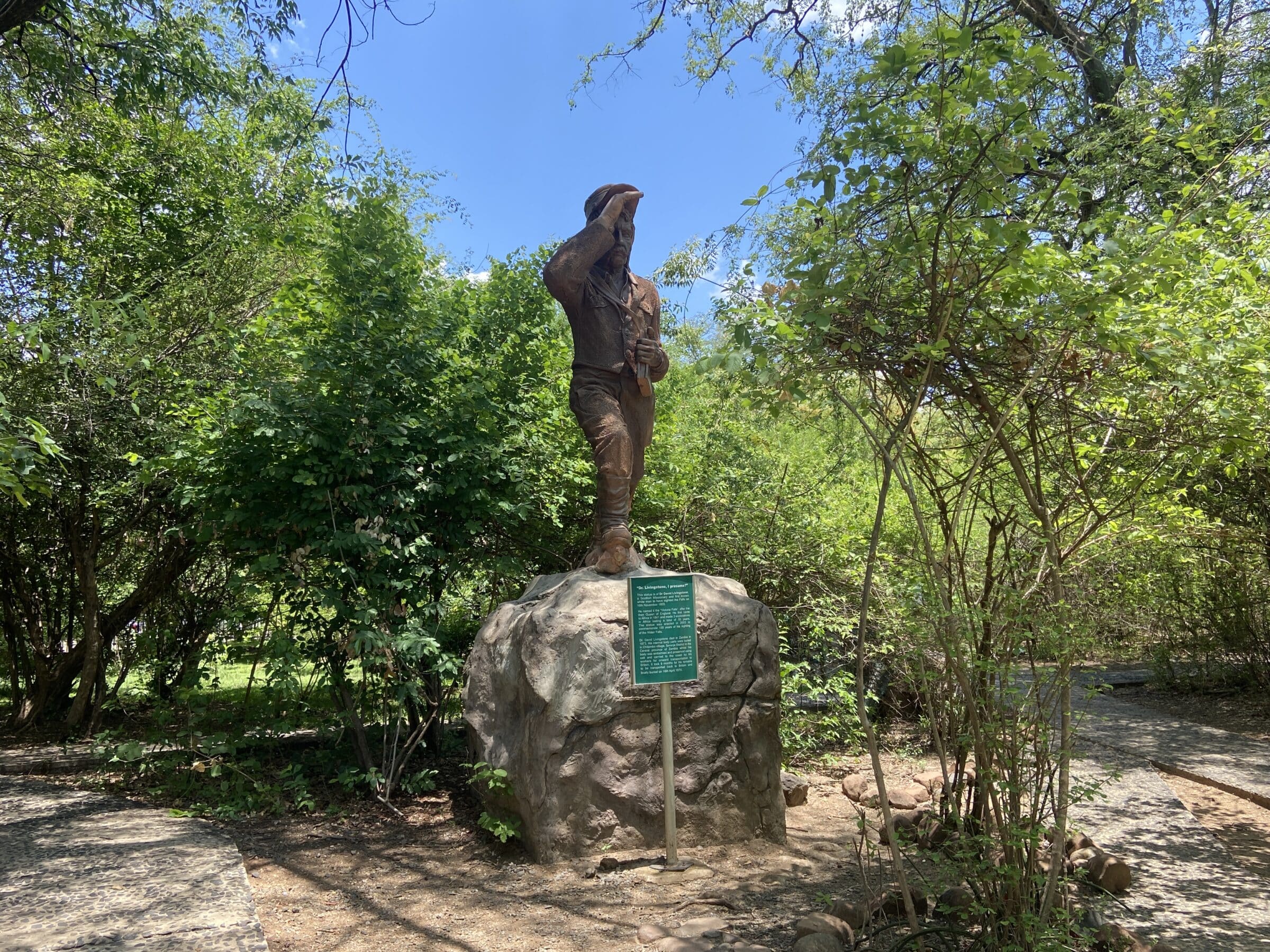
6. Cycling in Zambia
On our journey through Africa so far we have seen many modes of transportation. The most popular mode of travel in Africa is still on foot. Wherever you go, you see people walking along the street. But (trucks) cars, new or old barrels, many mopeds and trikes also determine the street scene. And everything is used as a taxi, often with as many people as possible on one vehicle.
But there was still one big thing missing for us Dutch, yes, the bicycle. Zambia breaks through this phenomenon, here there are hardly any mopeds or trikes, but bicycles. The bicycle is used to transport people or goods.
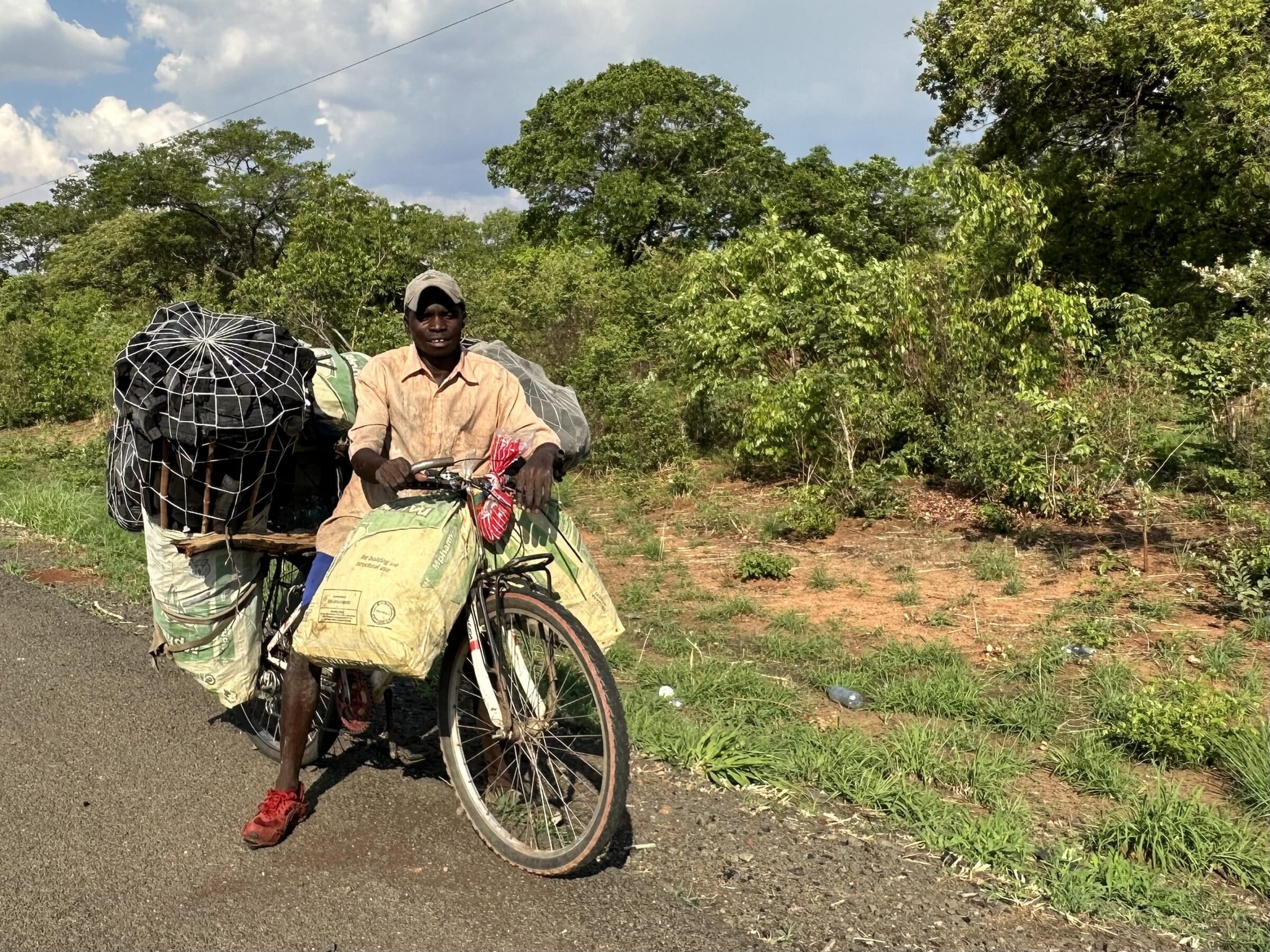
So we stopped along the road at a cyclist who was just taking a rest. He said he was some kind of charcoal dealer. His bicycle was completely covered in it. He buys the bags in a village and takes them to Livingstone where he tries to find a buyer. The journey cannot be made in one day, so he spends the night on the street in Livingstone. We conclude from the condition of his clothing and his two different shoes that he considers other expenses more important. We tip him and take a photo.
7. Police
On our way to Zambia's capital Lusaka we are stopped by the traffic police. Rightly so, because we drove 91! where we had missed the 60 sign. Well, we can't avoid this fine. Or at least… we have a friendly conversation with the officers while they explain what the procedure is. We would have to pay the equivalent of 12 euros, which is of course a joke compared to our European prices.
But during the conversation the gentlemen became more and more interested in our trip, the tone changed and eventually we left the crime scene with a warning in our pockets and parted ways as friends.
Grietje was allowed to take a photo of it.
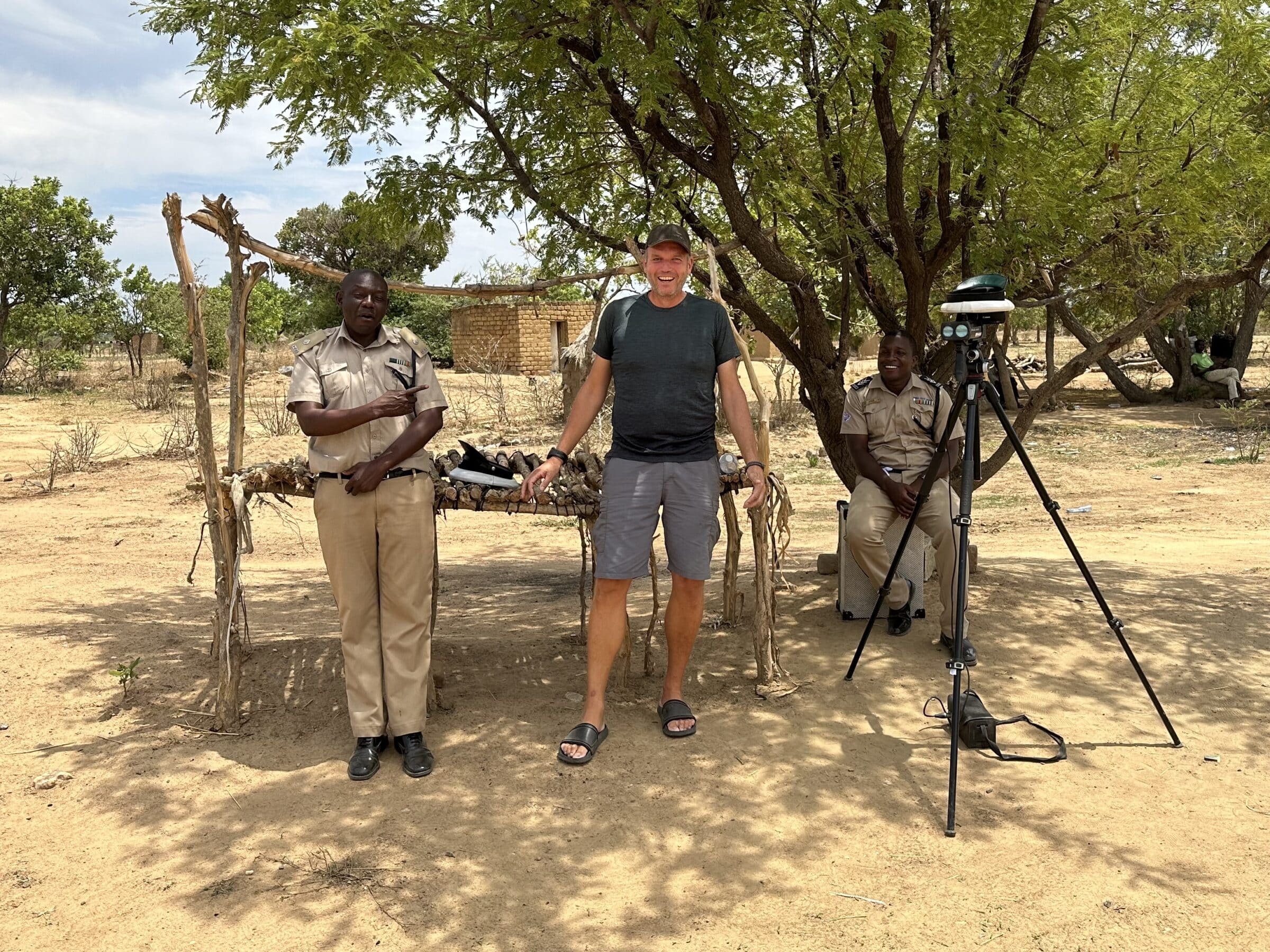
Less than 24 hours later, we are stopped in the middle of the capital's traffic by a uniformed police officer who steps out of an unmarked car. Initially he tells us, somewhat gruffly, that we are breaking the law because we do not have reflective stickers - front and back - on the camper.
We should come with you to the station.
When we tell him that we think he deserves an award because Zambia is the first country, after 22 previous African countries, where this kind of regulation exists, and that he has noticed this, he laughs.
If we tell him that we are going to buy stickers like this at the first car store, we can go. We give him two more lollipops for his children. He gets back in at a random passing car and continues on his way, unobtrusively. Nice guy!
8. Lusaka
We don't stay long in the capital of Zambia. It seems as if the almost 3 million inhabitants are all on the streets... what a crowd.
It seems like a modern city judging by the shops, cars and roads. We do a few errands in a shopping center and get the impression of being in an average European mall.
9. Kasanka National Park
This national park is known for its enormous numbers of bats. In the period between October and December, an estimated 10-15 million "live" here.
The bats obviously live at night, so they emerge around 6 am when it gets dark. Together with a guide, we go to a tower with a height of about 12 meters so that we have a beautiful view of the surroundings. Unfortunately it's raining, but it doesn't bother the bats at all. Around 6 o'clock they emerge in the millions. The wow feeling is great, the sky is black with bats. All around, as far as you can see.
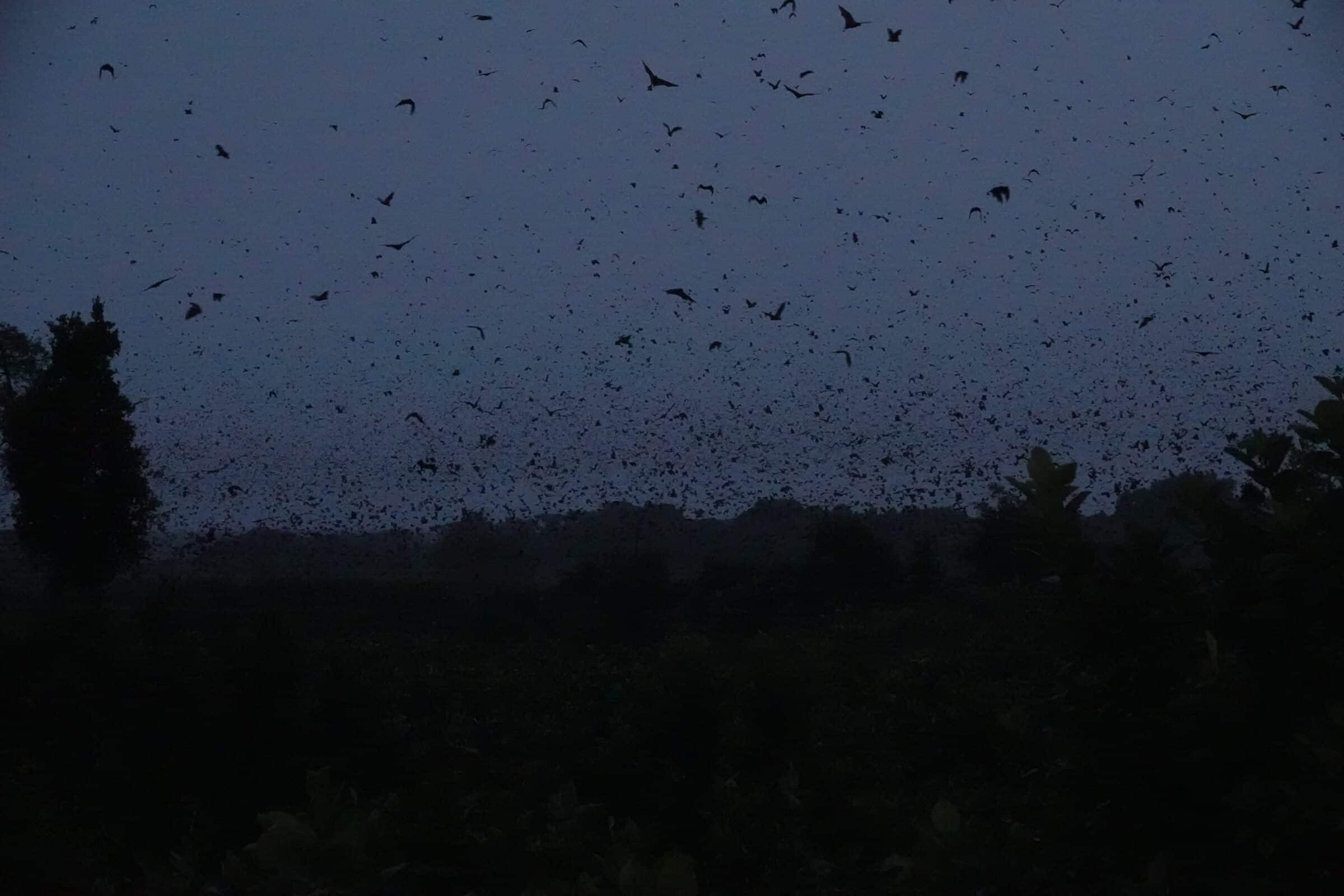
By half past six the number decreases. They have an area with a radius of 100 kilometers where they collect their vegetable food, returning at dawn.
From mid-December the bats migrate to lands around the national park. Researchers have investigated this and found specimens in Congo, Cameroon, Angola, South Africa, Tanzania, Zimbabwe, Botswana even Kenya.
Every year in October they come back here in Kasanka National Park, for centuries.
10. Naknakapalayo
On our overland route through northeastern Zambia we more or less accidentally pass a village where a tourist project is underway. We have already traveled many kilometers through remote areas and on dirt roads that have become quite challenging due to the starting rainy season.
Along the way we encounter many beautiful houses and friendly waving people, while the rain is pouring down from the sky.
To support all villagers, the project was launched in 2004 with the aim of giving visitors an insight into the contemporary life of the village, with the beautiful name Naknakapalayo. The proceeds are used for projects for the benefit of the villagers, especially healthcare.
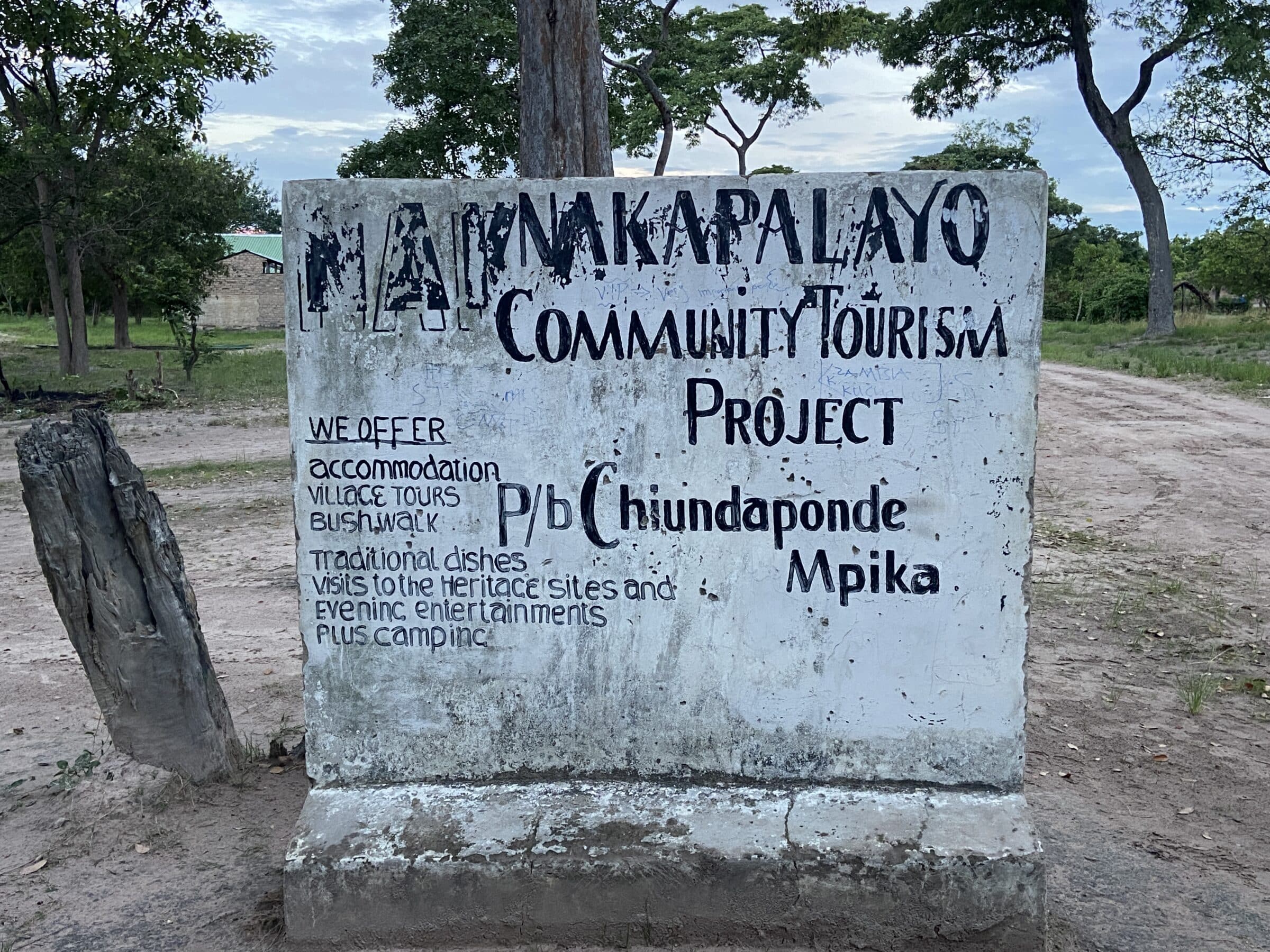
We spend the night on a kind of village square among residents and a number of bungalow-like accommodations. We can shower under a “bucket shower” even with warm water, which is boiled on a wood fire. The toilet is a hole in the ground, with paper!
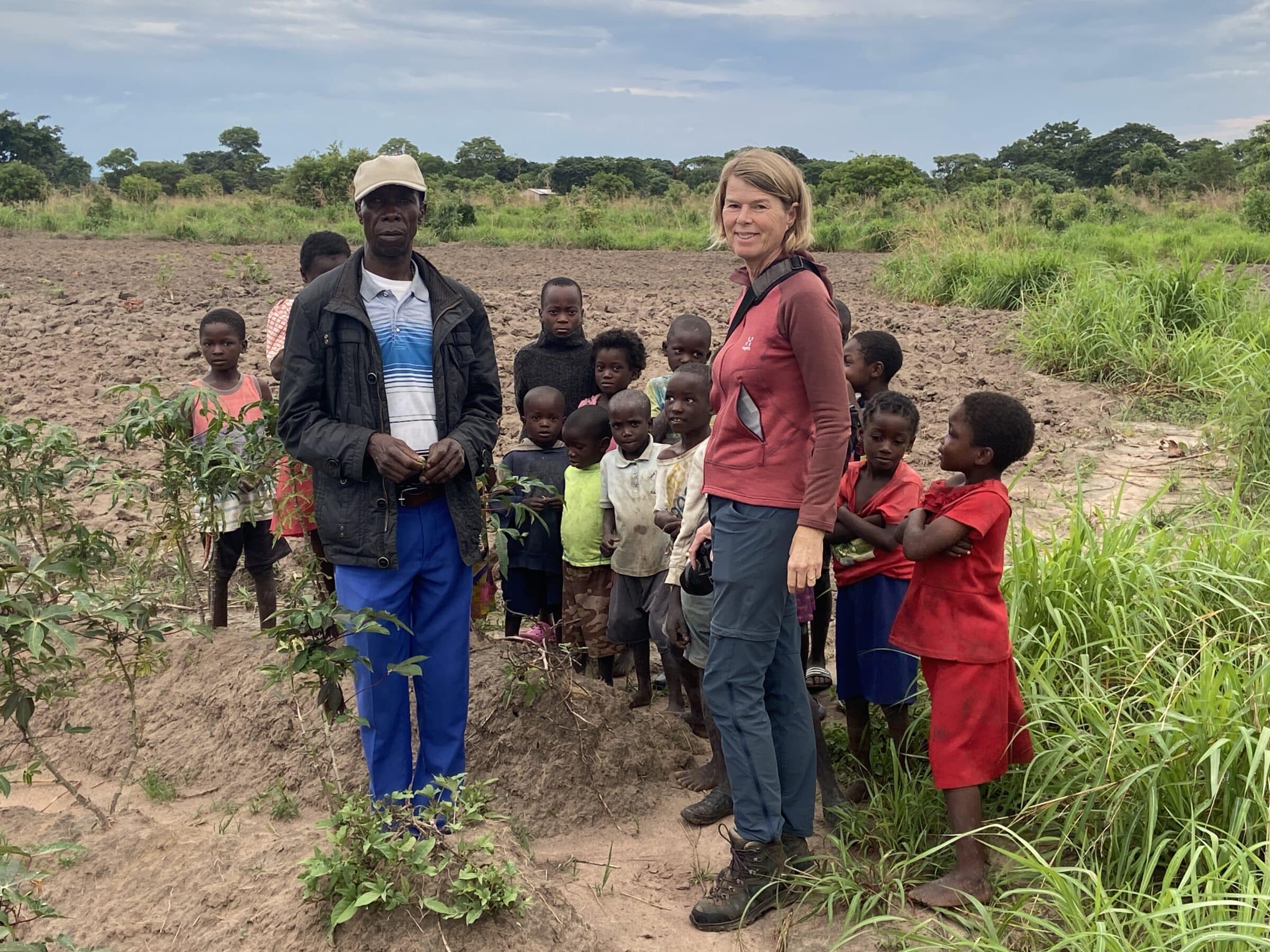
They offer a guided village tour, a bush walk or an organized fun evening with music and dancing. We are guided through the village and the surrounding area and learn a lot about the local customs. Very educational and a fantastic way to get closer to “real” life.
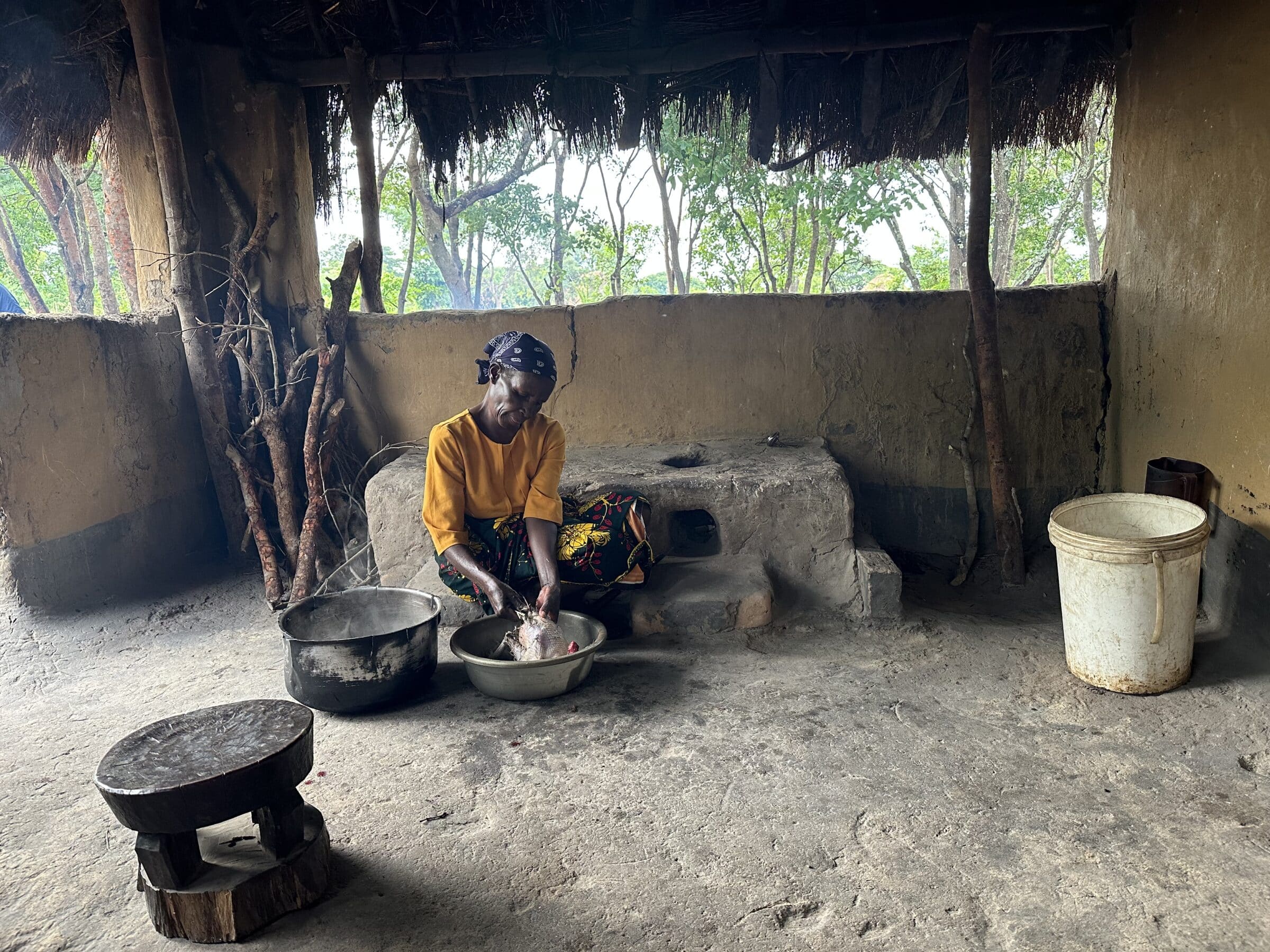
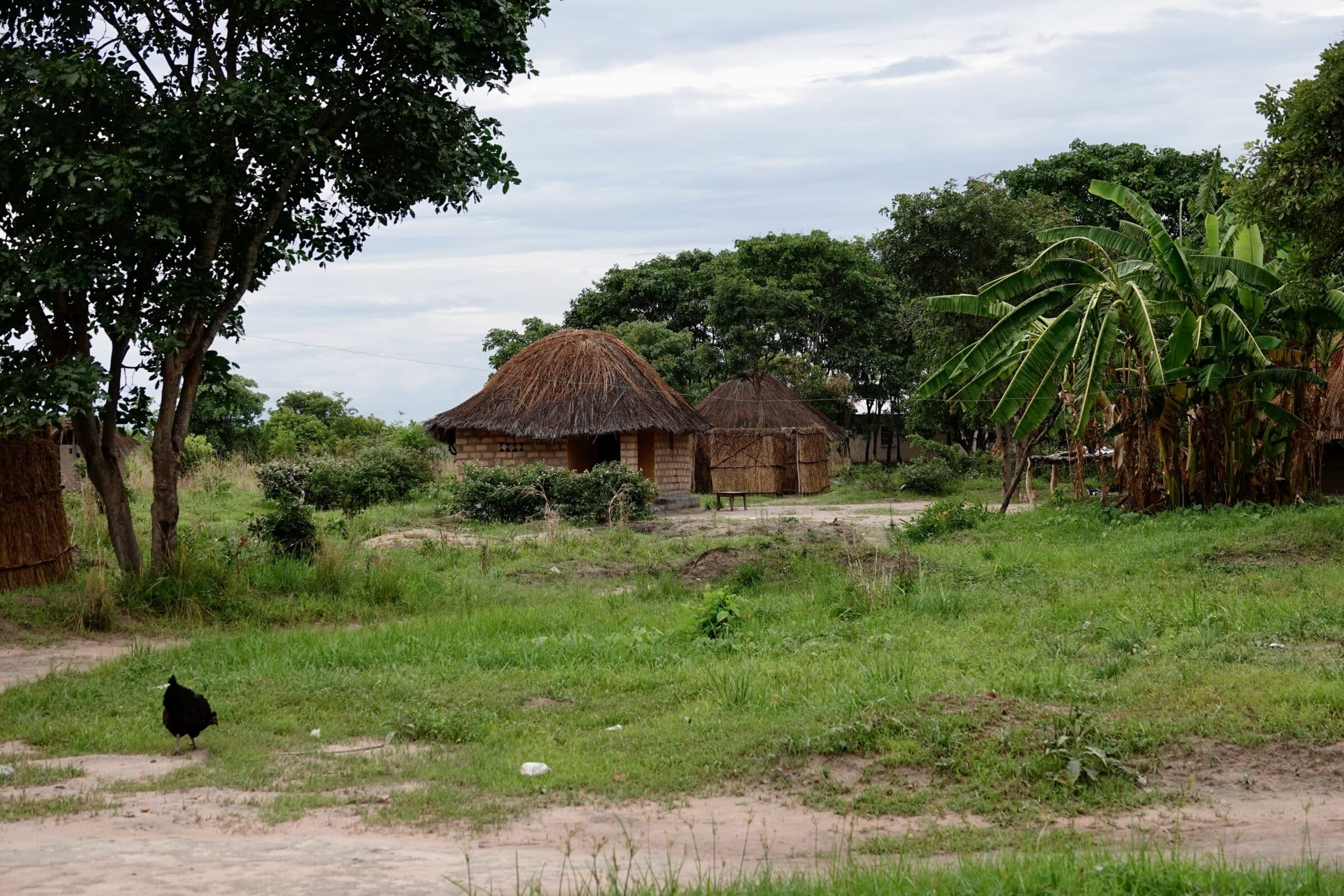
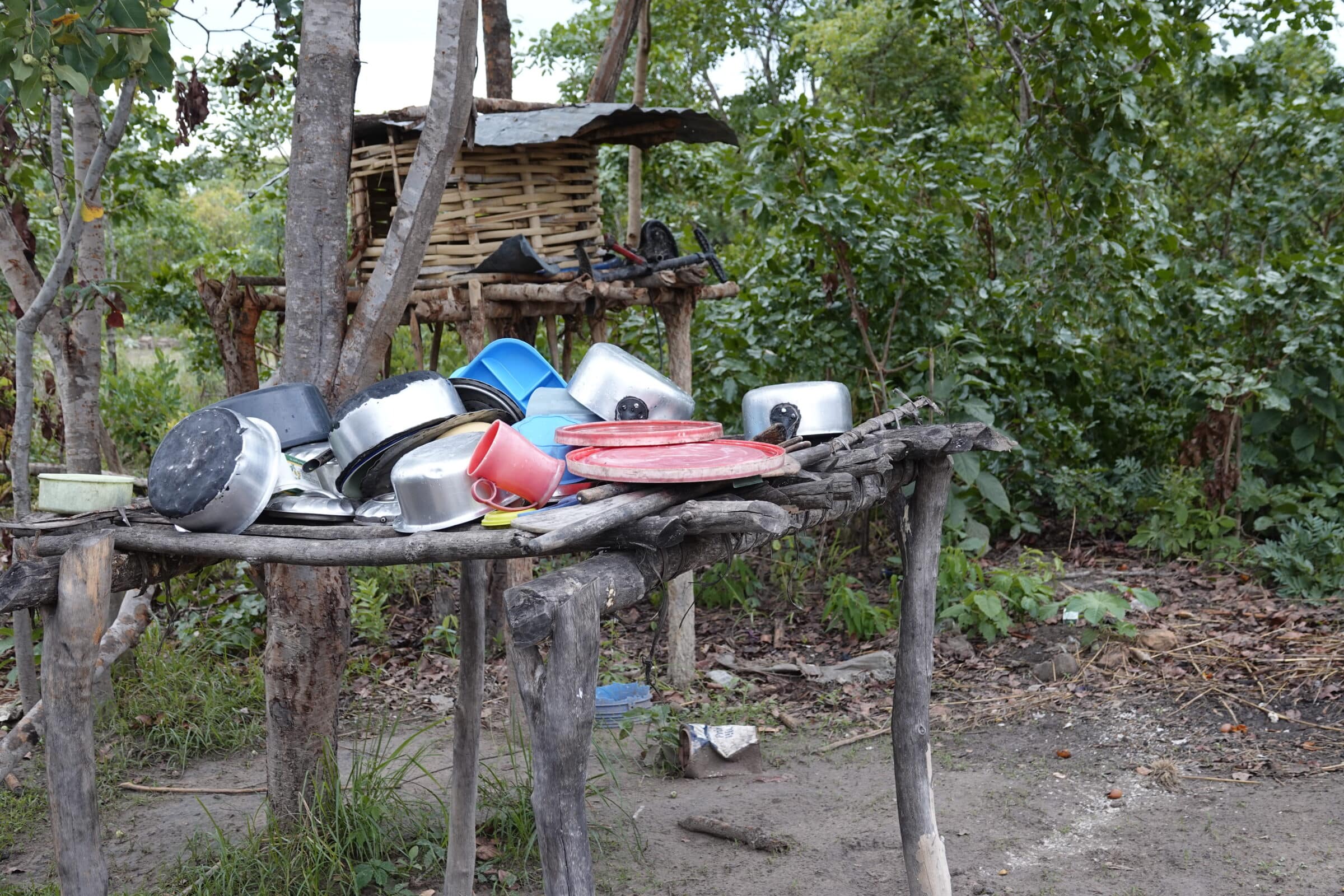
11. The teacher
In a remote place, at the end of a rainy Saturday afternoon, it is already dusk and we do not yet have a place to stay for the night. The iOverlander location - which we had in mind - no longer appears to exist. As an alternative, we ask a passer-by. He offers to spend the night in his yard.
The man in his forties is a teacher at the adjacent primary school. He says that the school has been closed since December 1 due to a five-week Christmas holiday. The school has a catchment area with a radius of no less than 27 km. For those who have to walk the furthest, there is an option to stay for a week, the rest walks!
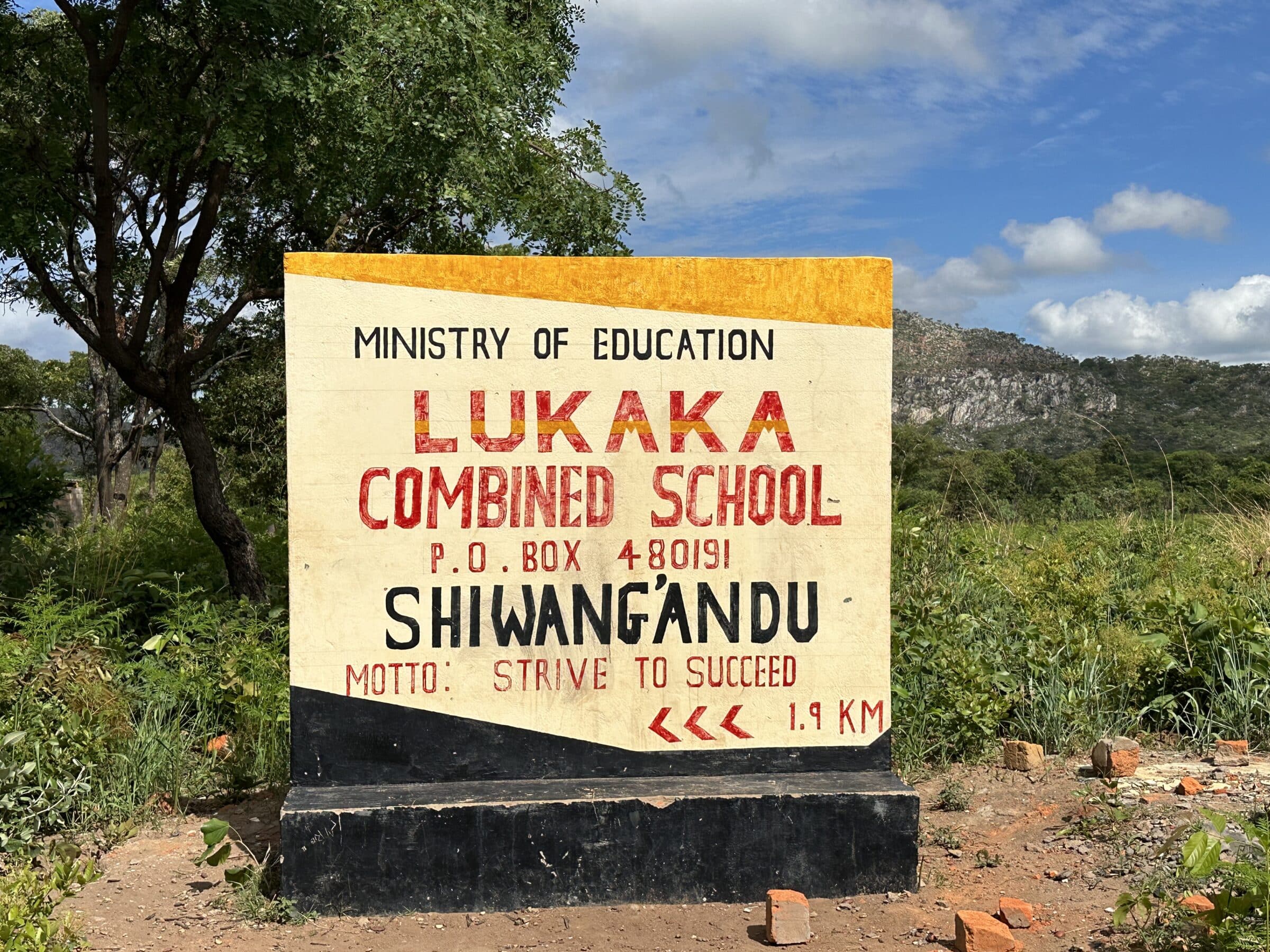
The government recently decided to make education possible for everyone, without any personal contribution. So the next challenge is school density. Because, the teacher says, “there is a lot of absence.”
You can see that this teacher is somewhat better off than the average population. He is the only one who owns a car. Even under a real “carport”, self-made from a few trunks from the forest.
“I hardly ever drive it, it's way too expensive,” says the friendly man.
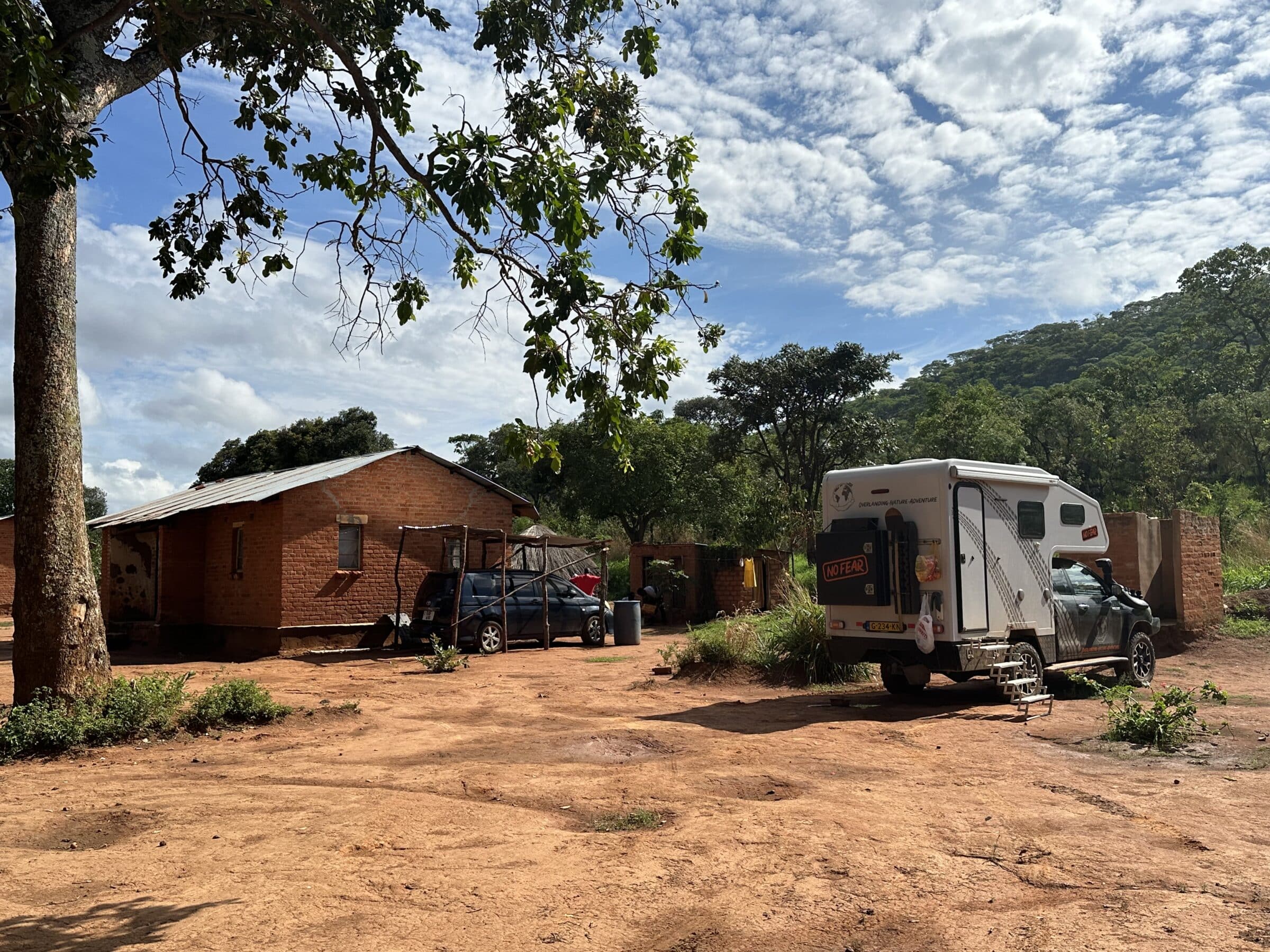
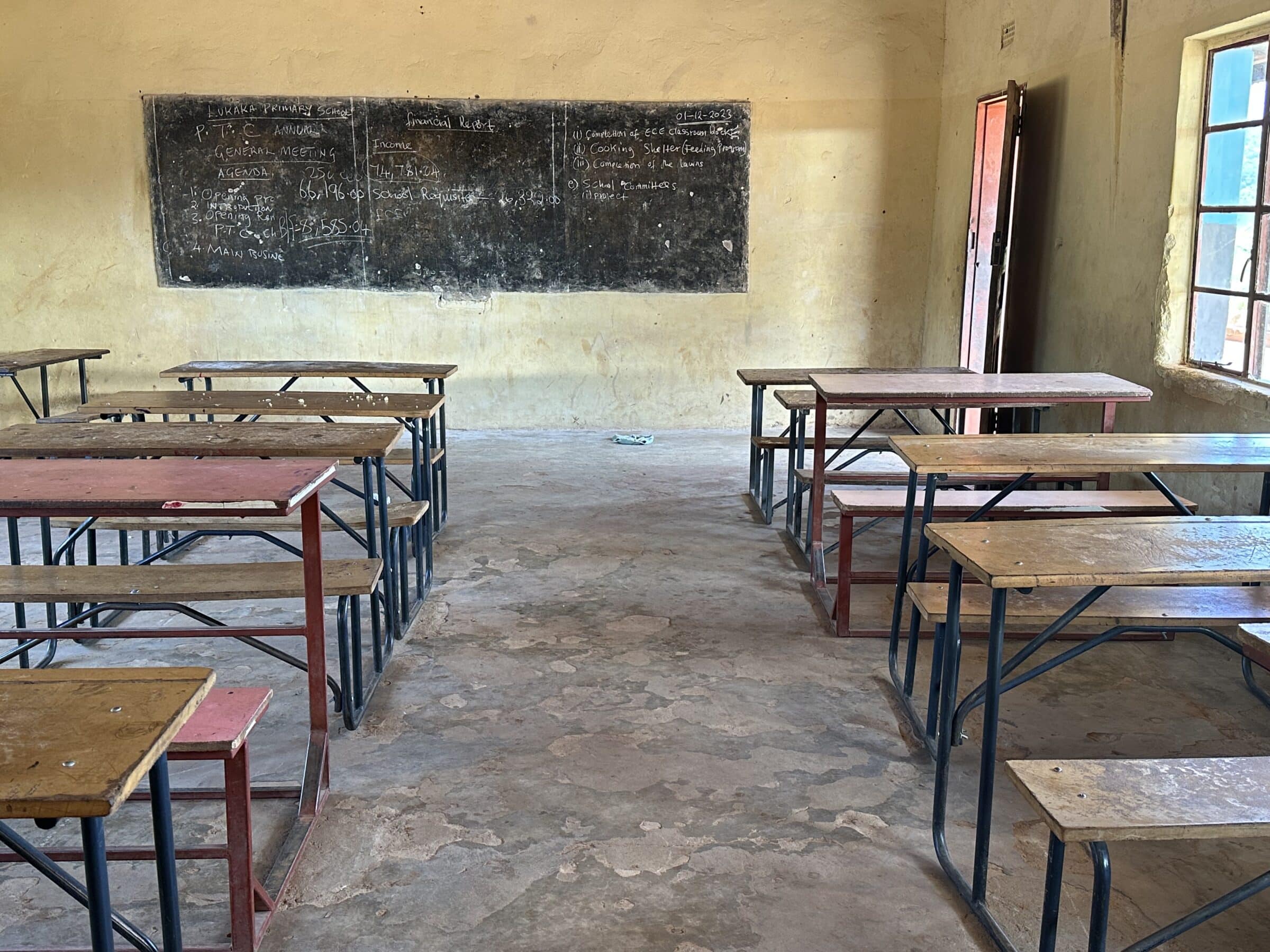
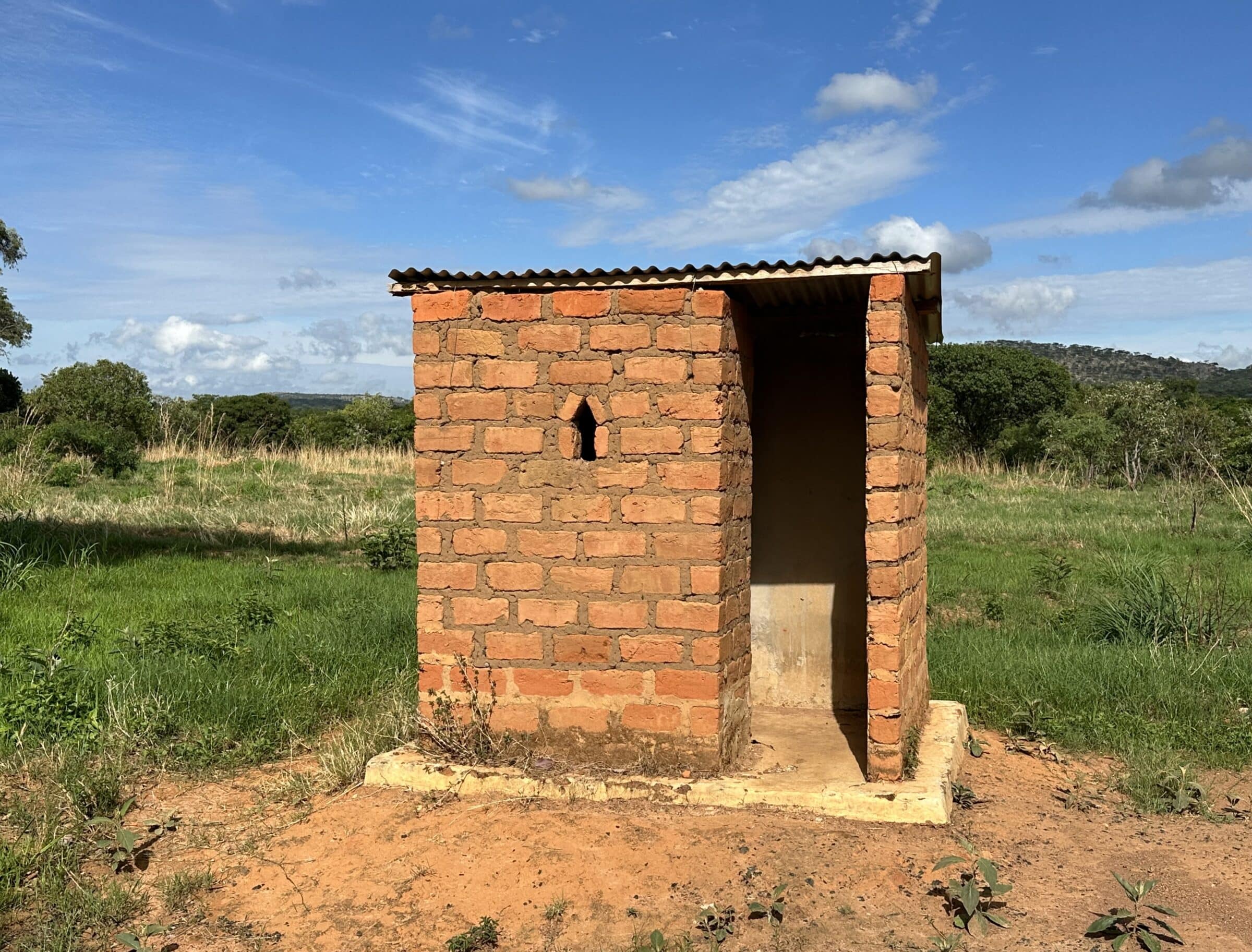
12. Direction South Luangwa National Park
On our way south along the border with Malawi and along the Luangwa River we are lucky with the weather in mid-December. Yes, it rains every now and then with a big thunderstorm, but sometimes it turns out to be very localized. If you drive 10 kilometers further it blows again. We pass numerous rivers, all of which are branches of the Luangwa. In the rainy season it is absolutely an impassable path. Some concrete bridges have been built here and there, but most of them have become unusable due to the heavy current, so you have to cross the riverbed again.
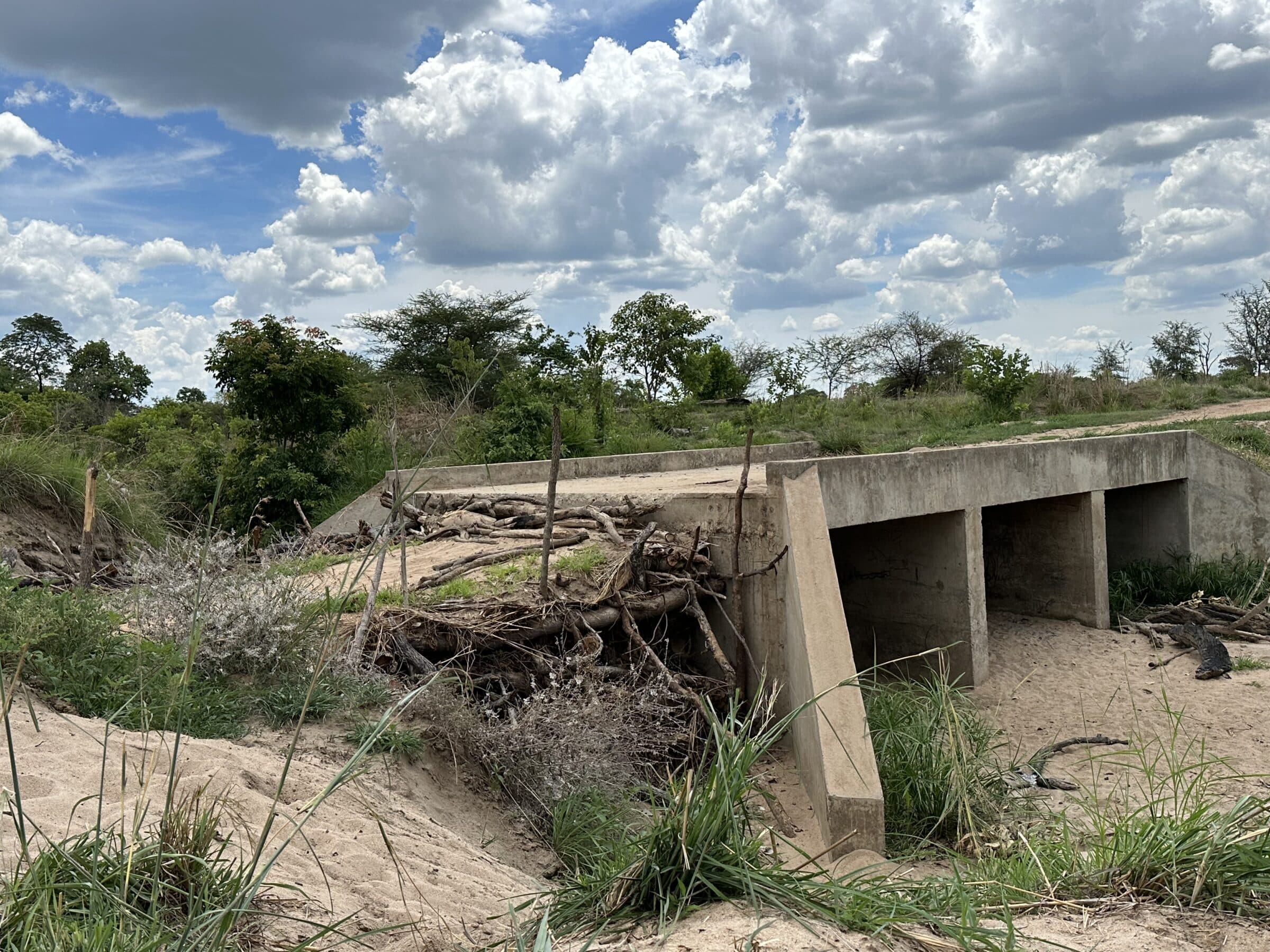
Along the way we see a lot of subsistence farming. There are villages, but the habitation is very spread out. When we have a cup of coffee under a large mango tree, a resident stops for a chat.
The man says that the area here has been completely closed off from the outside world for about 5 months. No one has a vehicle that can navigate the harsh roads. “Rainy season can start anytime now,” he says without being concerned, accustomed to the situation.
Apparently they have the supplies in the village in order so that the entire village population can survive isolated for 5 months.
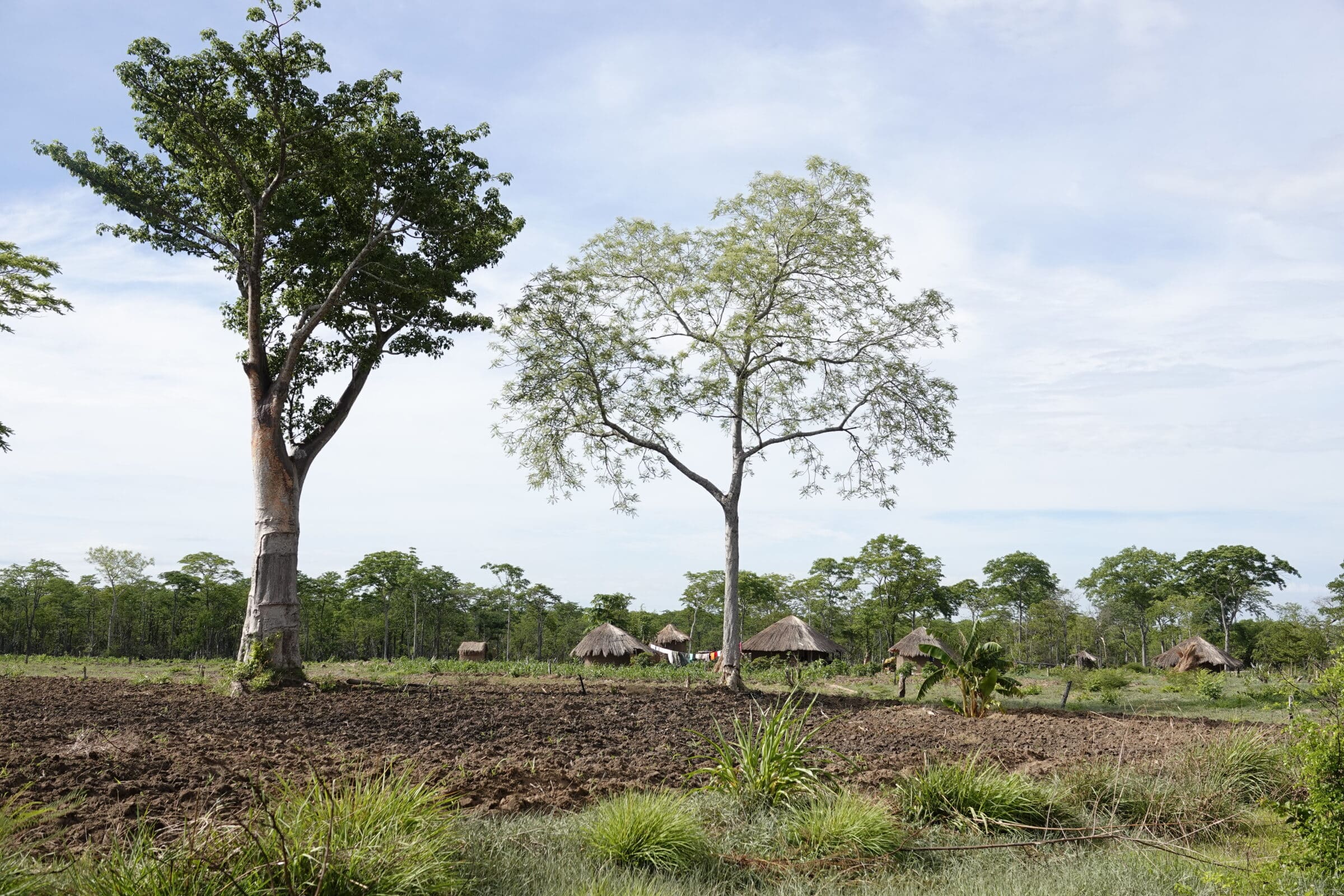
At the end of the day we settle down at a campsite run by “a villager”. We are the only guests. The temporary manager is a friendly young man who quickly prepares the shower and toilet. A colleague lights a campfire and with a view over the seemingly dry river we enjoy the beautiful setting. The river may be largely dry, but there is still a small stream.
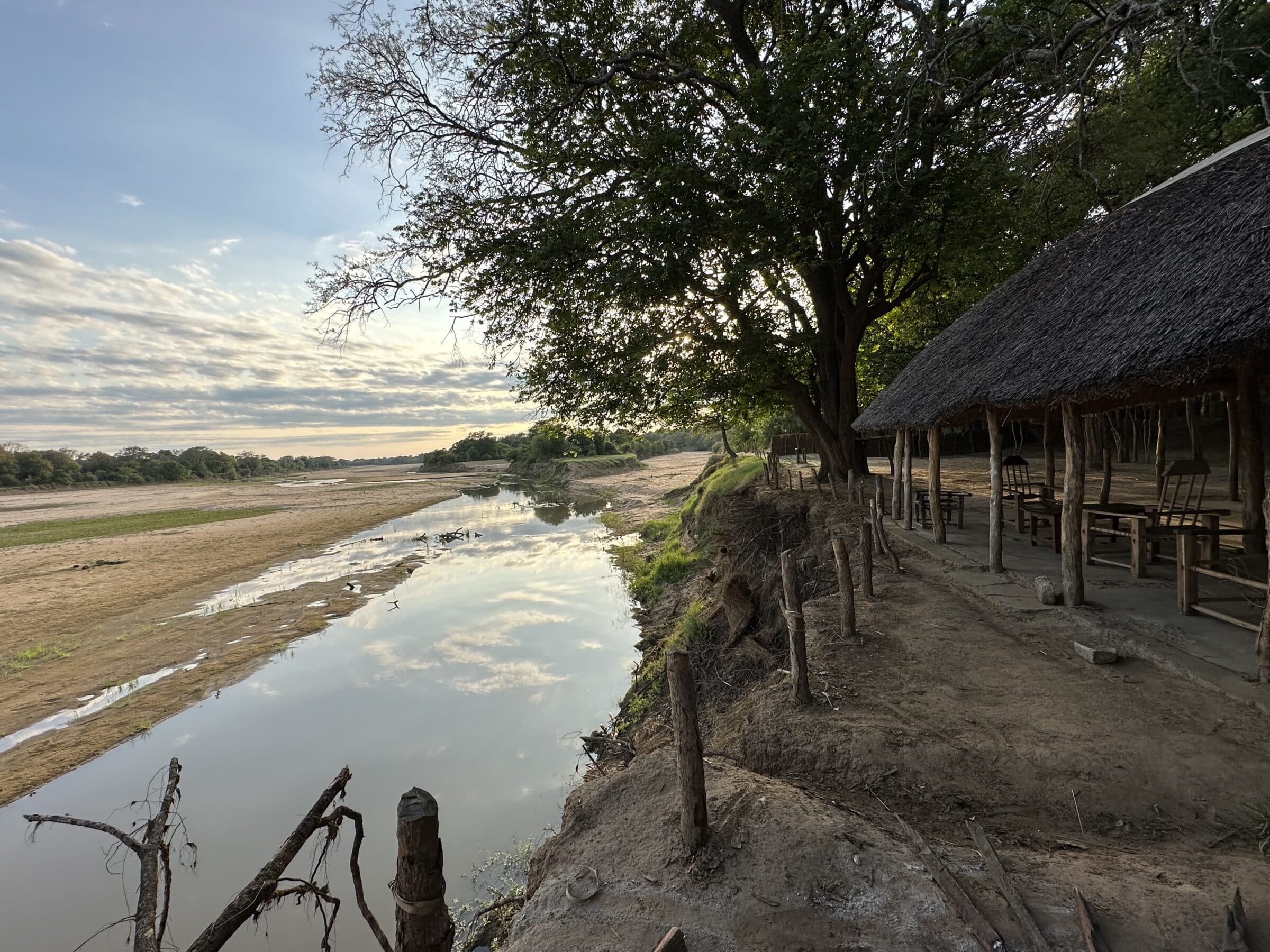
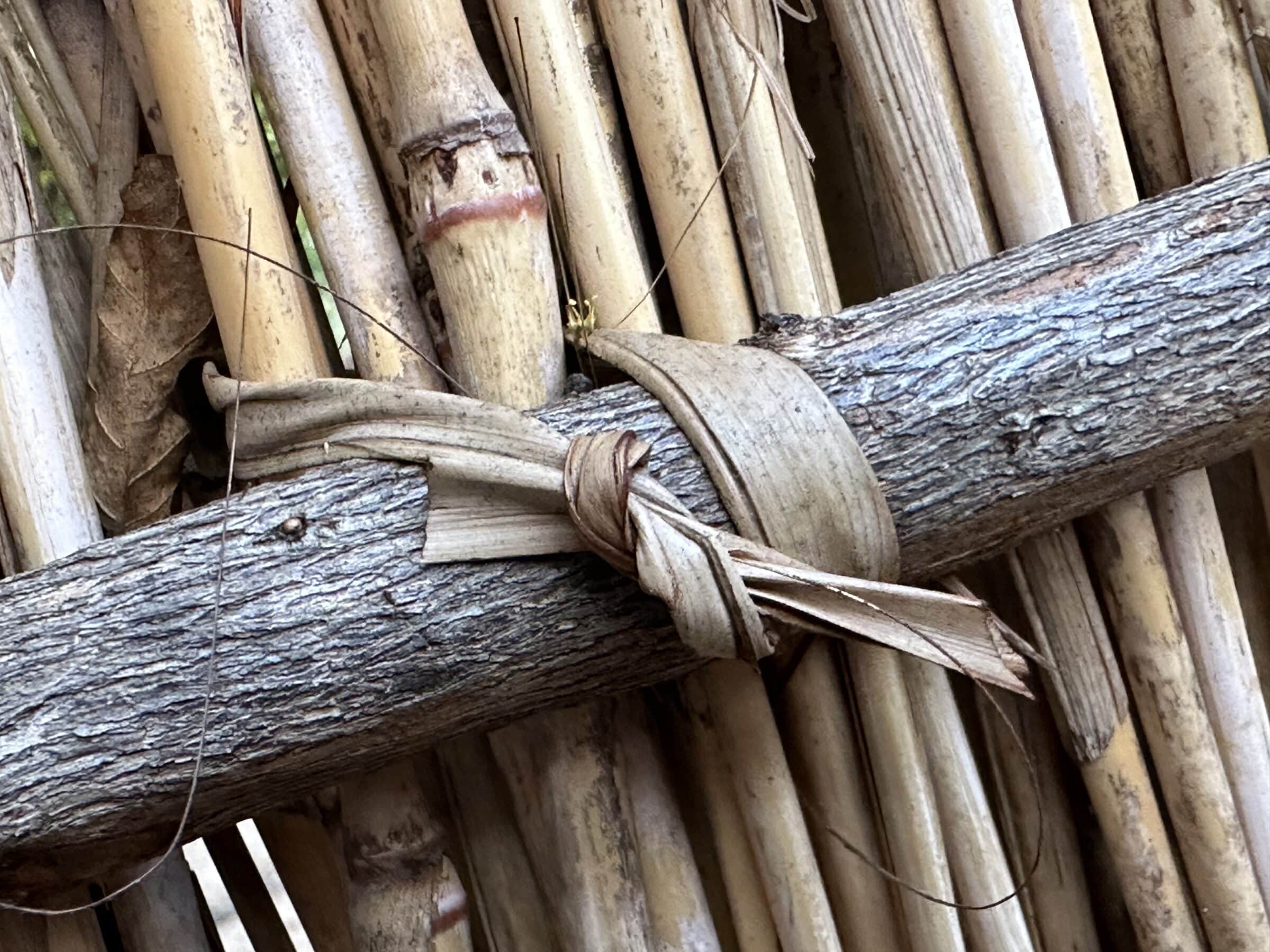
The next morning at 5 o'clock we have a prime spot to watch the animal world awaken. Pukus, hippos and many birds use the limited amount of water while we hear the growl of a lion in the distance.
13. We're not there yet
We only have a short distance left, 70 kilometers, that should be possible today. It will be a day with two faces. On the one hand, fascinating landscapes with a lot of wildlife, on the other hand, the 70 kilometers prove to be quite challenging. The biggest problem is the slippery clay, which means you are completely dependent on the trail of predecessors. You can't figure it out. So just continue driving and hope for a drier section.
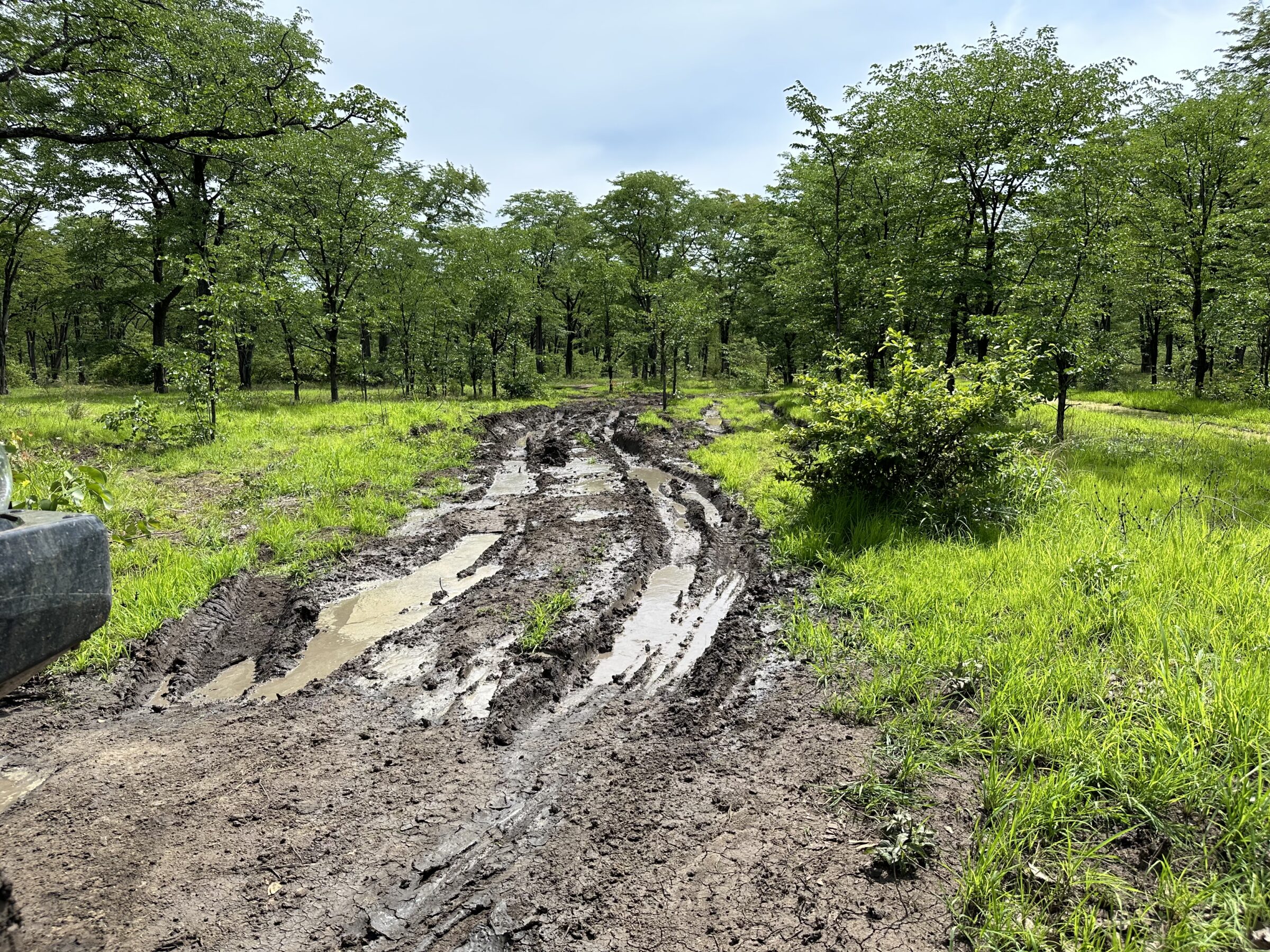
Then the many river crossings, all tributaries of the mighty Luangwa. Sometimes there are bridges, but they have been washed away in the past or become impassable, so we still often have to enter and exit the river very steeply. This is pure overlanding!
But new in our experience are the millions of elephants walking on the road, often on dried-up clay. It makes the car vibrate even more than the so-called “washboard roads” (corrugation).
Quite a tiring day for the driver, but fortunately Grietje has her eyes wide open to spot wildlife. This way we don't miss anything.
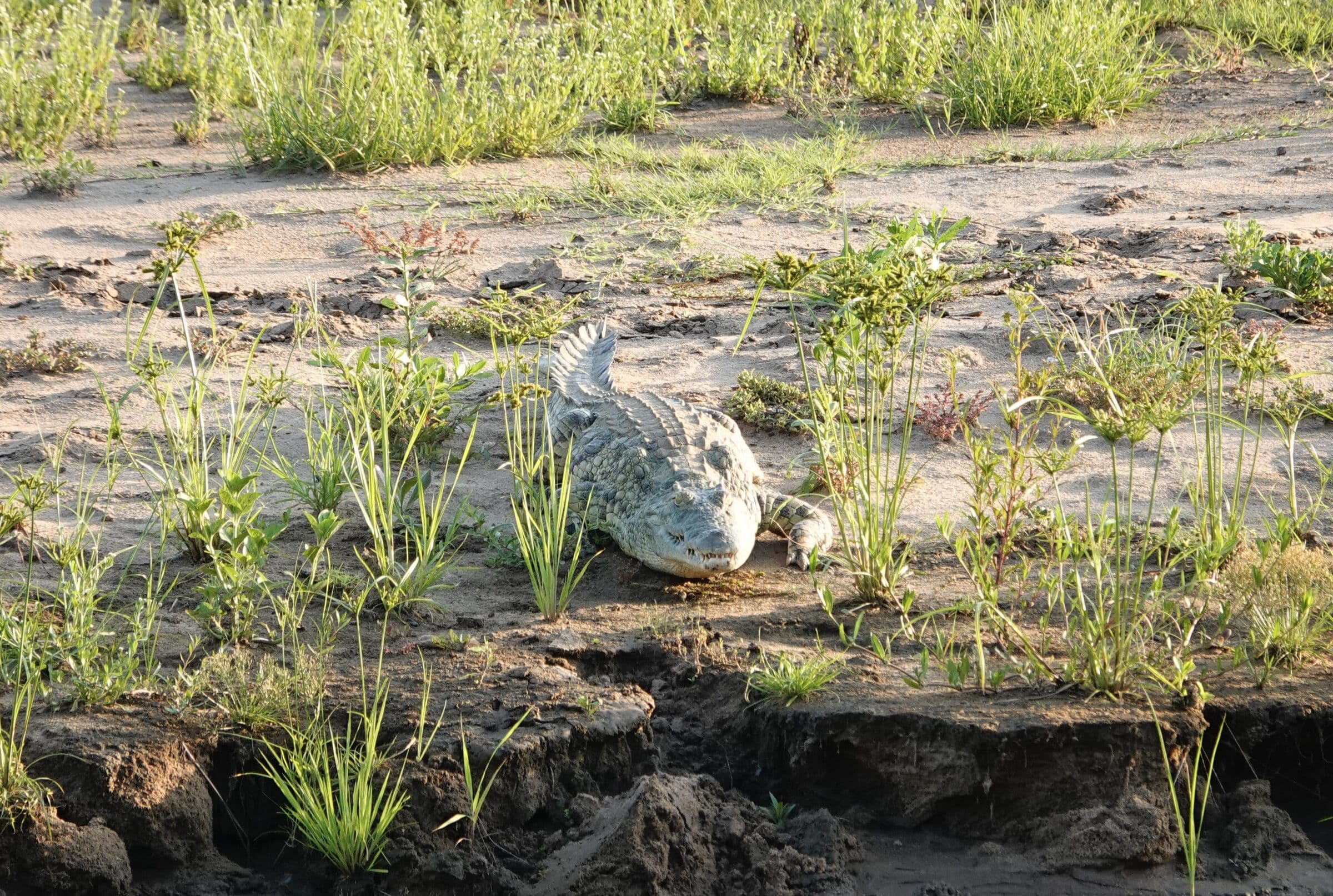
In addition to elephants, pukus, zebras and many birds, the dessert of the day is a huge herd of buffalo. There are many hundreds of them and we can get quite close to them without them attacking our car.
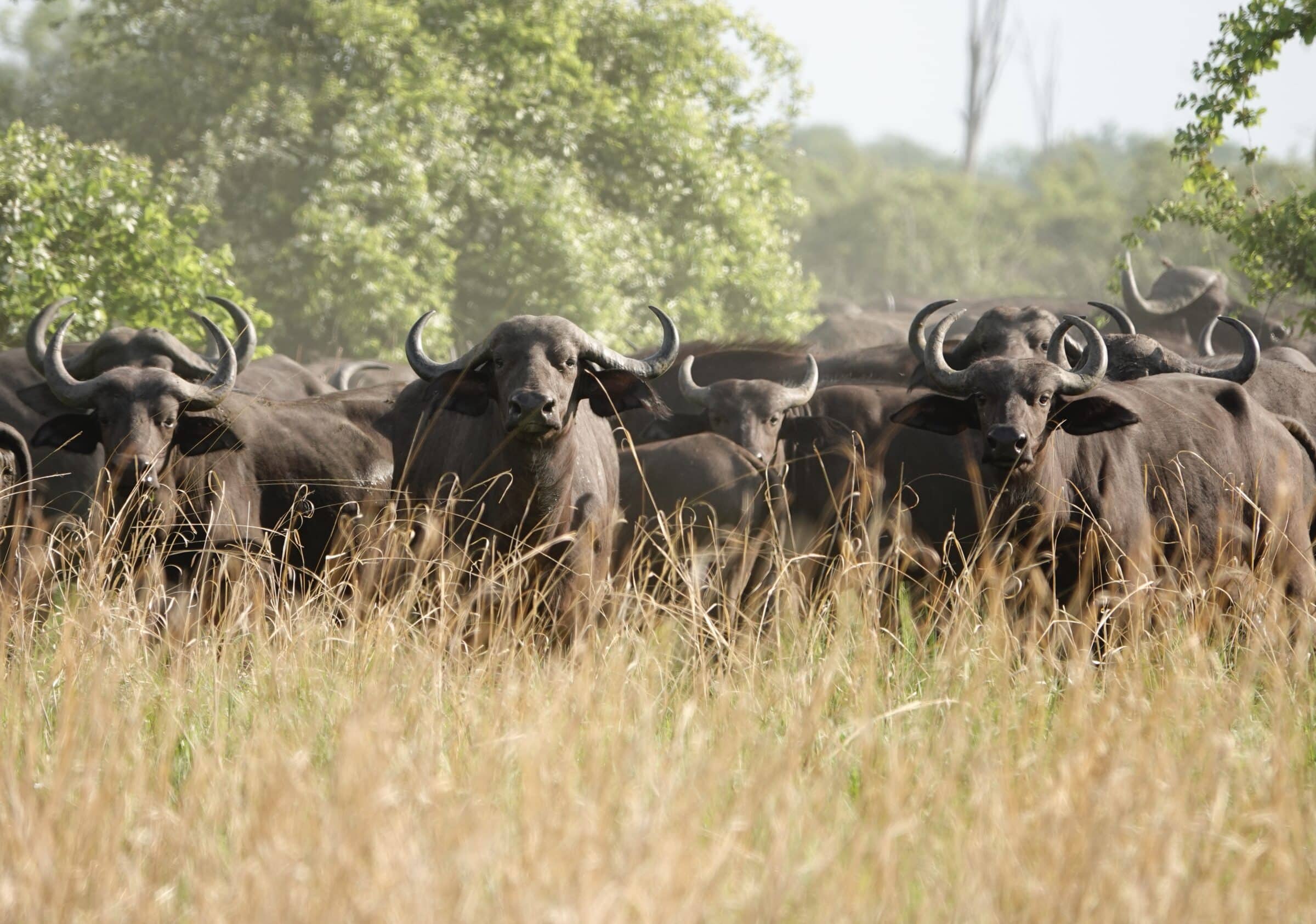
Finally we reach the campsite, right on the river, near the entrance to the national park. Here we take it easy after a few strenuous days. Relax in the pool and enjoy the abundance of wildlife in the Luangwa, with many crocodiles and hippos swimming past in front of us.
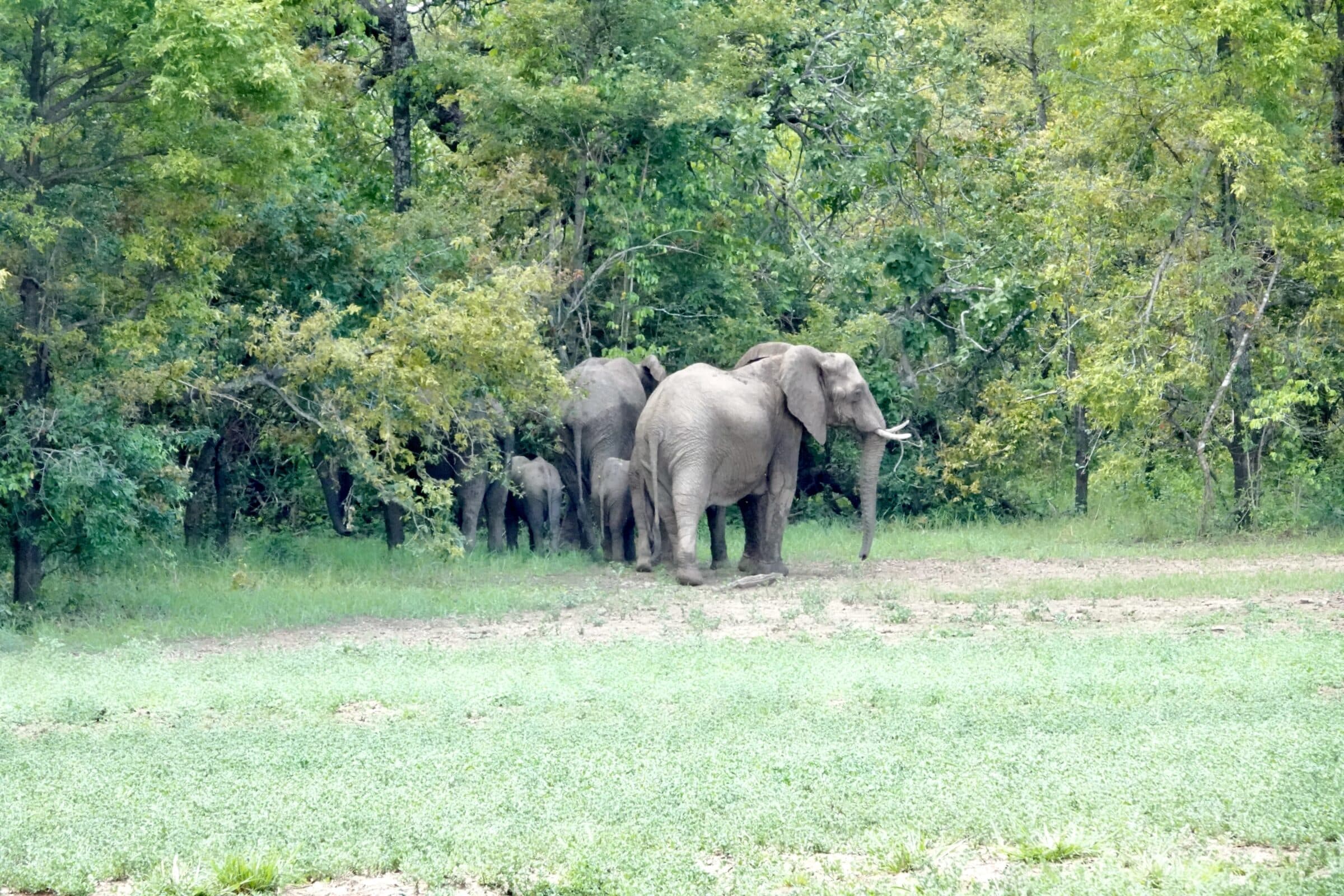
14. South Luangwa National Park
Our visit to this park is actually a first introduction to a large and commercial national park. We had already visited a number of parks, but these were smaller, more informal and smaller-scale in design, therefore no less impressive.
The South Luangwa National Park is located along, you guessed it, the Luangwa River, which in turn flows south into the great Zambezi. In addition to the southern park, there is also a northern park and the Luambe National Park, both located on the same river. But less appealing then South Luangwa NP.
The park, which obtained National Park status in 1972, is known as one of the most impressive in Africa. Life around the mighty Luangwa River is so intense and there is so much wildlife that you won't be able to keep your ears and eyes short.
The park is known for its walking safaris, which only take place in the winter season when there are no leaves on the trees.
We camp on a luxurious campsite with a view of the river, just before the entrance to the park. And that is not a punishment. From our lounge chair we can view life around the river. While crocodiles swim back and forth in search of fish, the hippos open their mouths wide again. A herd of elephants, antelopes and zebras come to the other side to quench their thirst. Everything is watched from above by enormous numbers and different birds while we have to look after our belongings, because cheeky monkeys and baboons are after all our belongings.
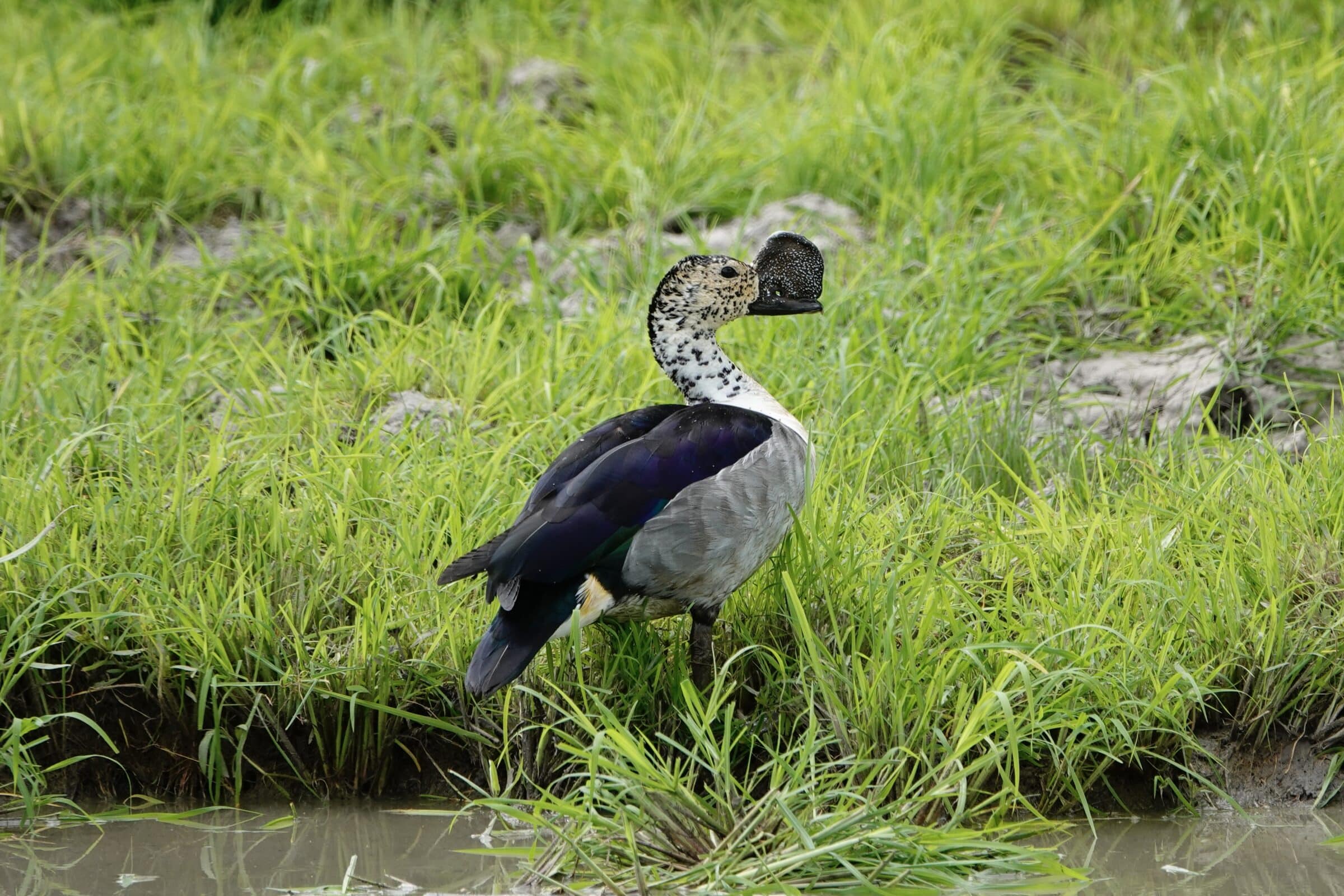
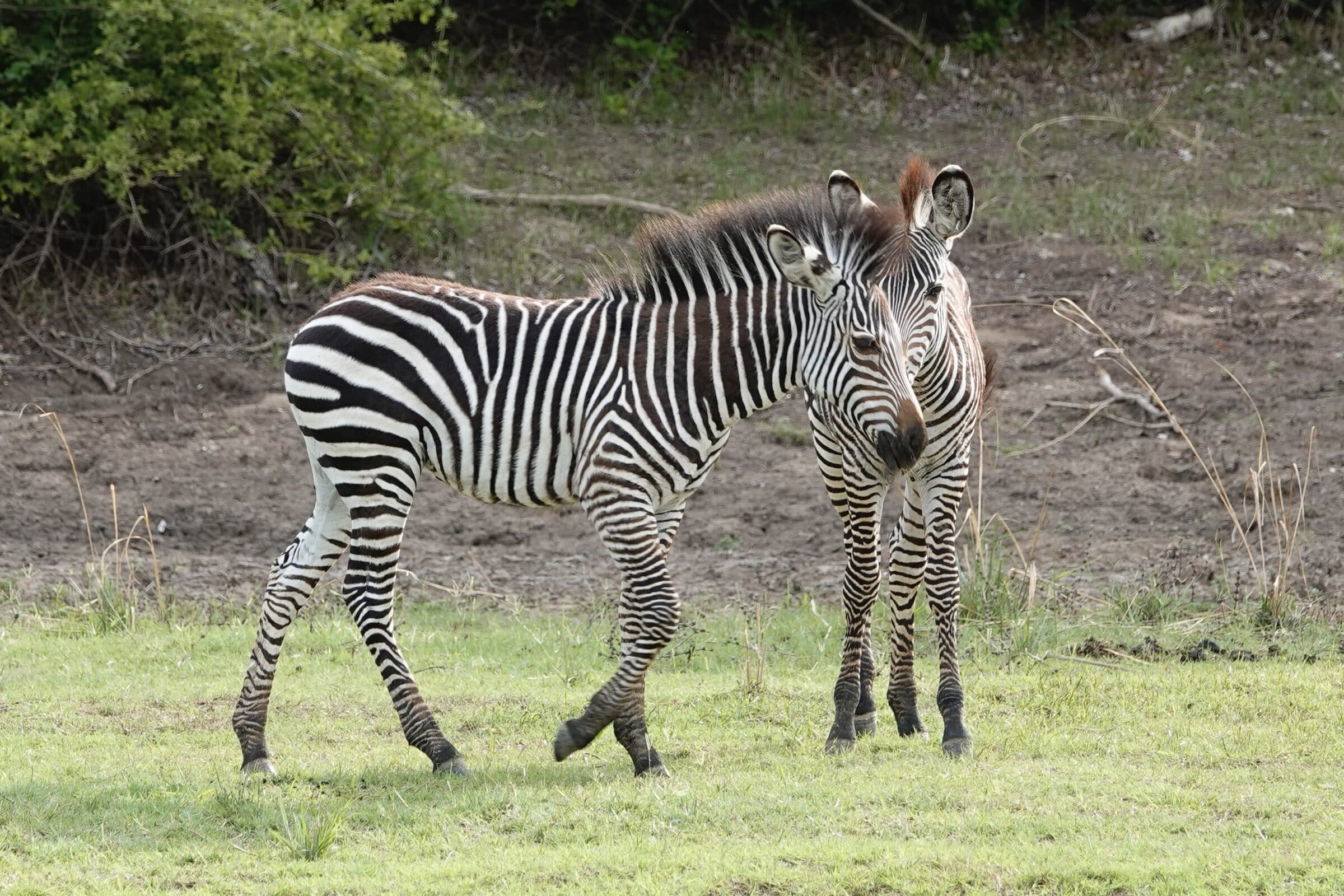
Of course we also go on safari. We have the choice of a morning, evening or full day safari. We choose a morning. At 6 o'clock we gather in a Land Rover converted into a safari car to enter the park with the eight of us. It turns out we're not the only ones. The safari trucks are queuing at the entrance because everyone still has to pay a park fee personally.
It gives a less special feeling. Finally we can cross the bridge and find ourselves in the park where we look for lions, giraffes, leopards, zebras and elephants.
In the beginning we drive in circles over a large maze of paths. We see little game, but many “fellow” safari trucks, all looking for the same thing.
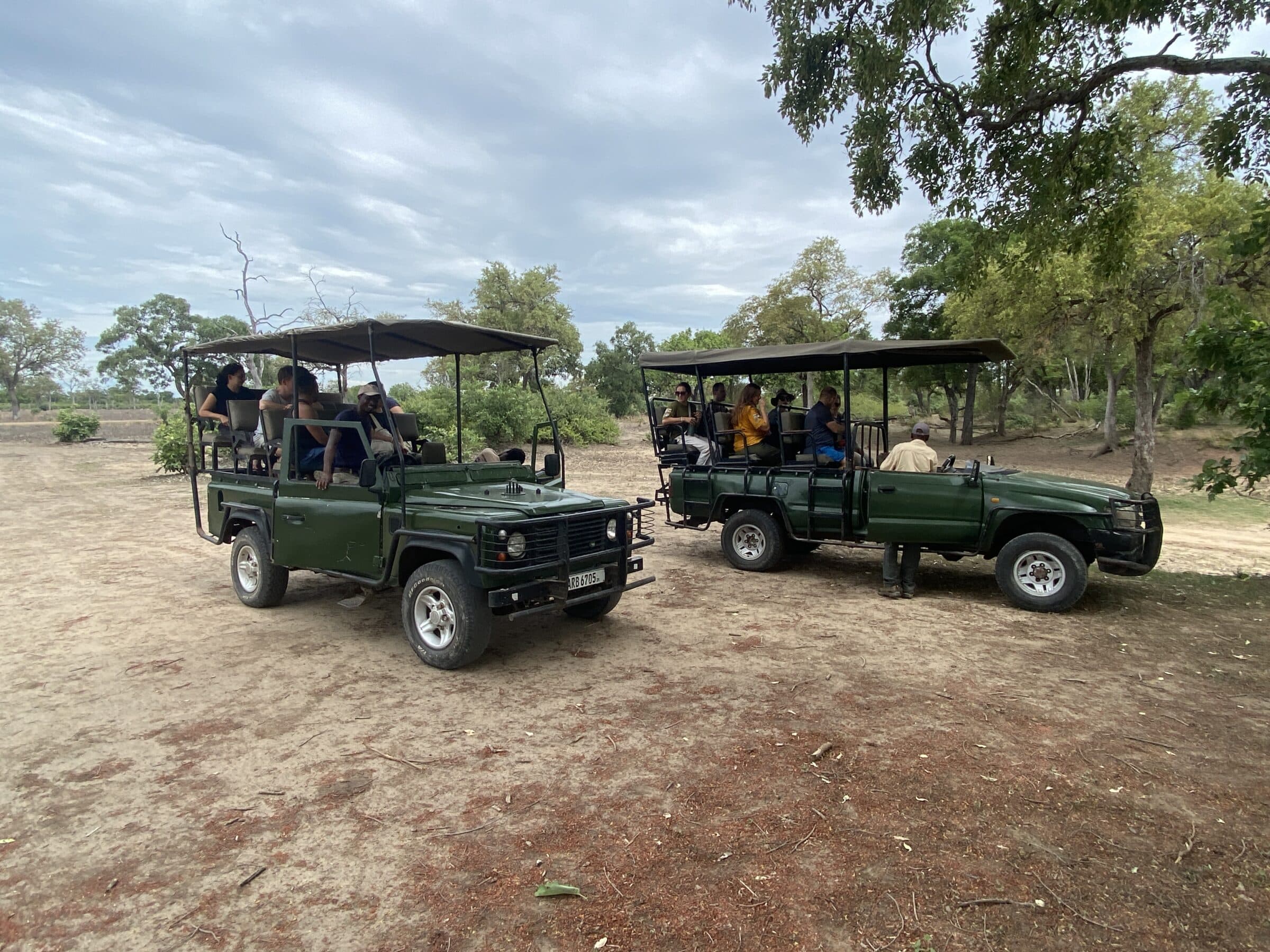
Later we expand the search area and come across an elephant. We can observe him up close. Then we see another herd of zebras and suddenly a long neck of a giraffe appears. During the tour we see several birds, including the typical “German Bird”.
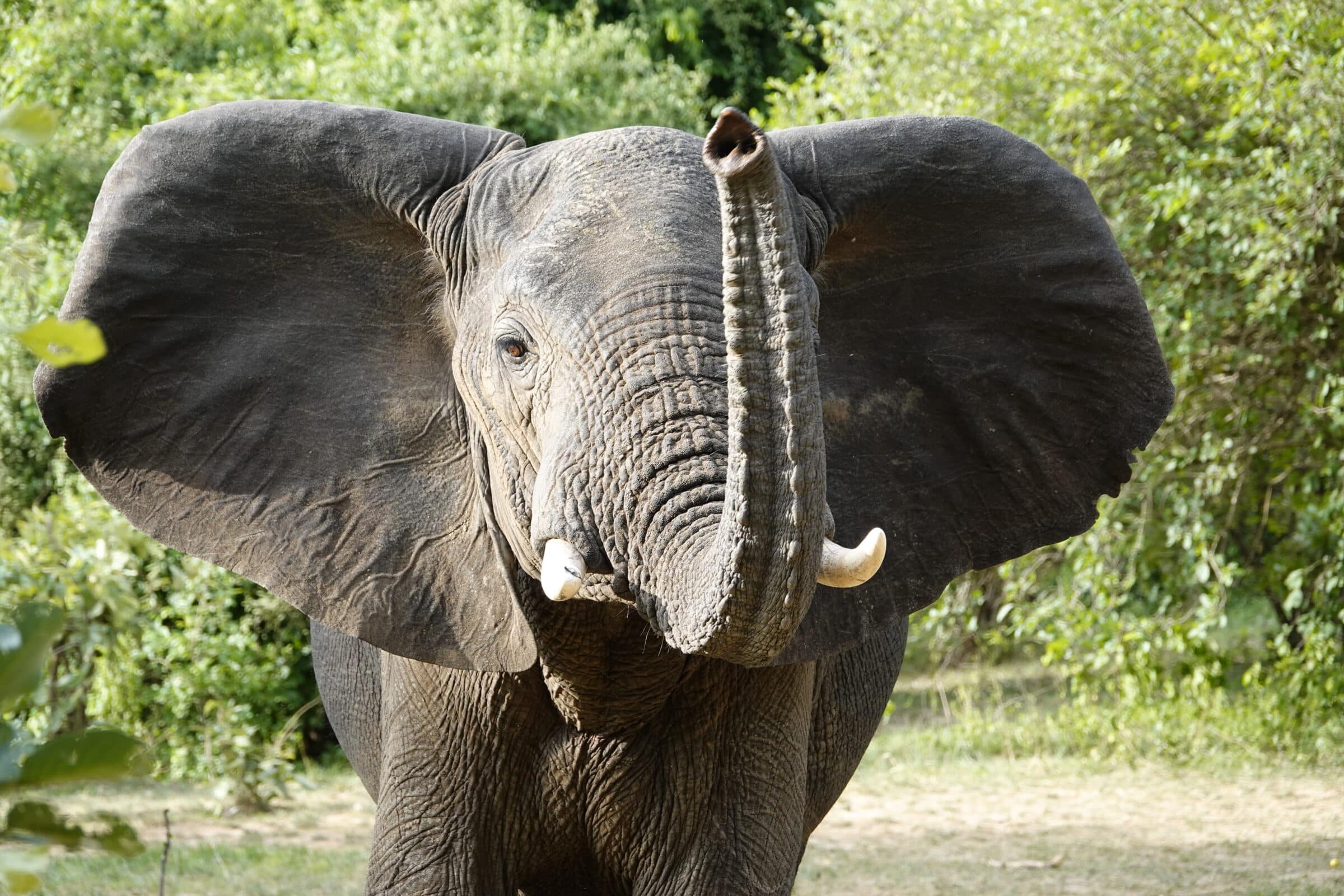
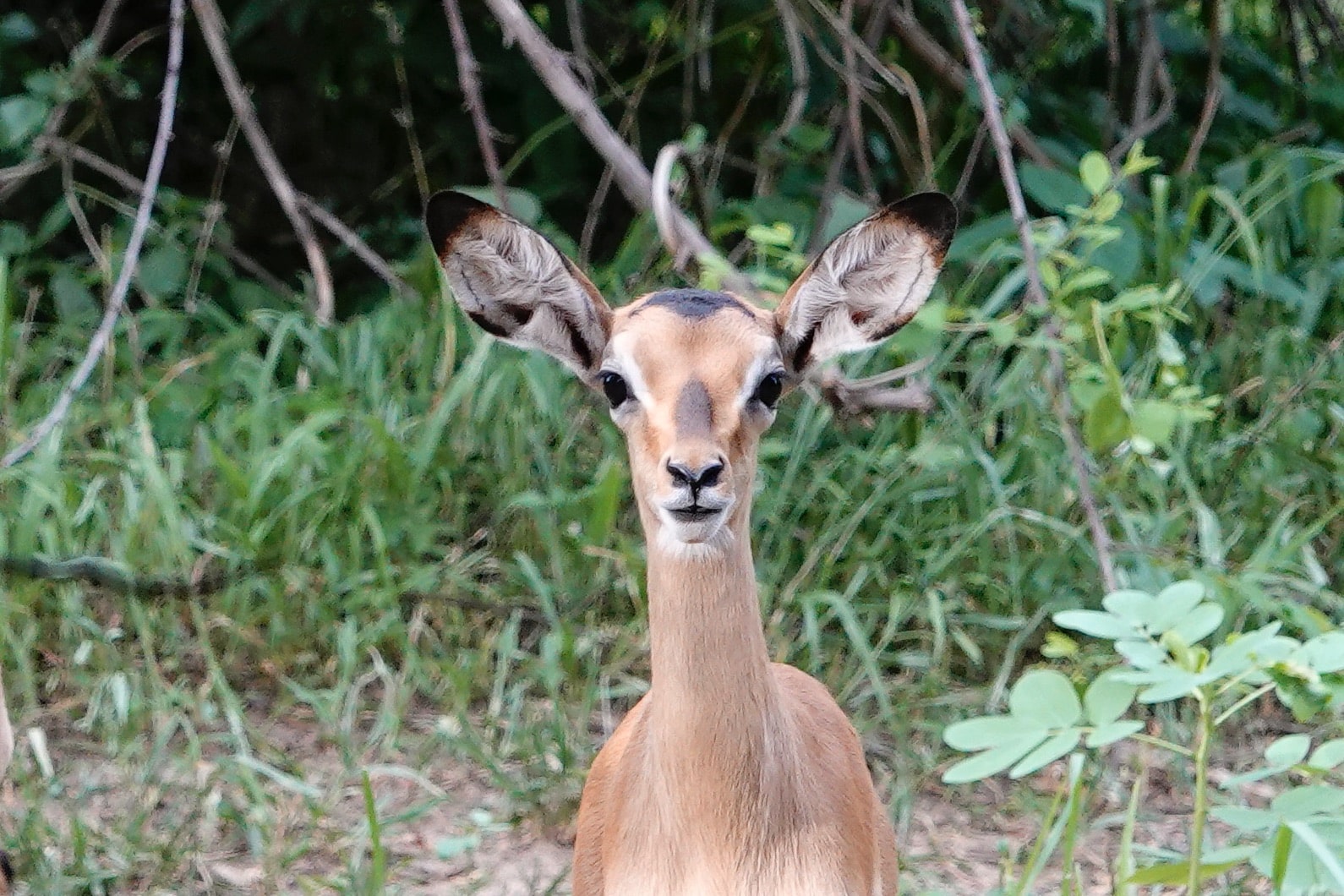
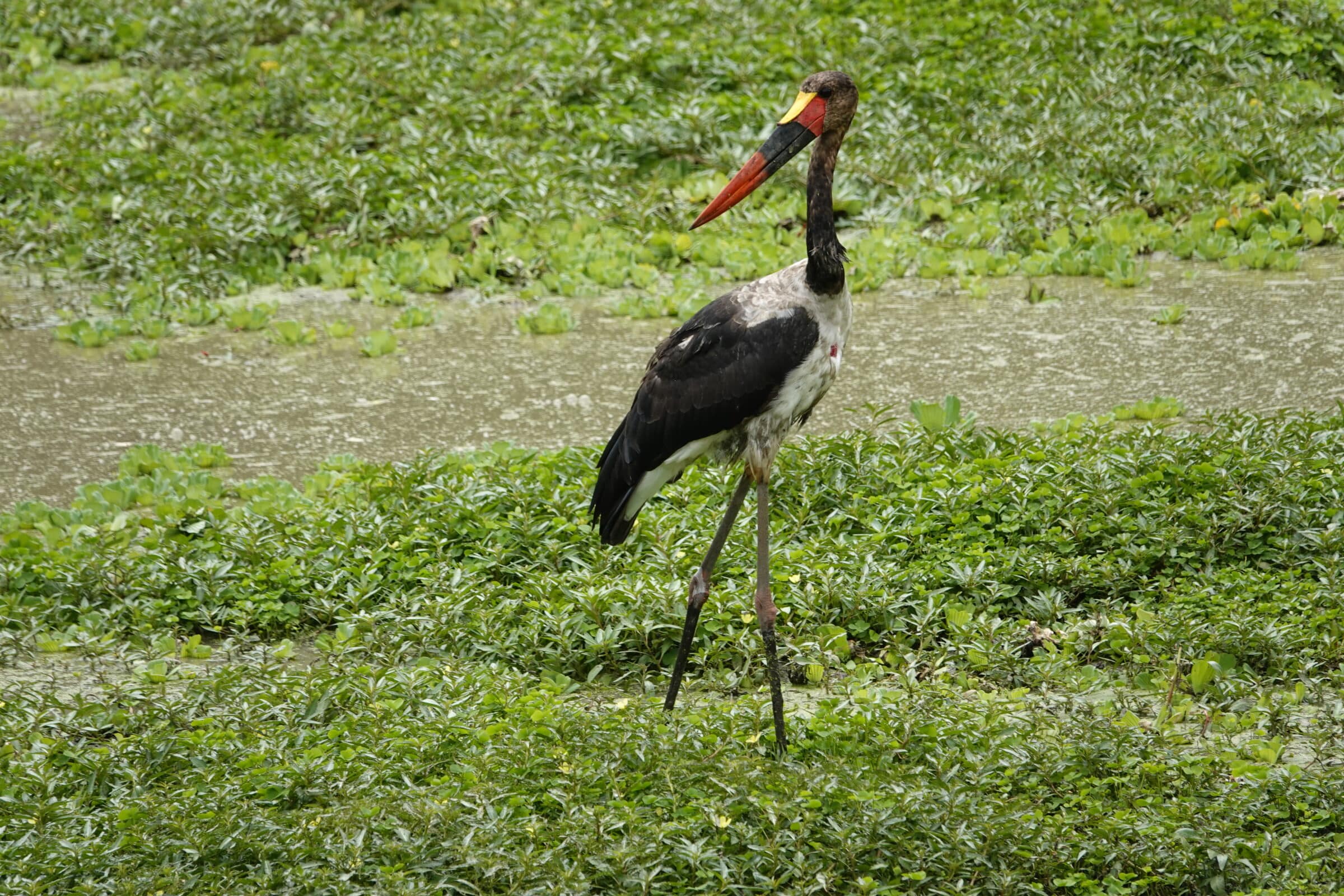
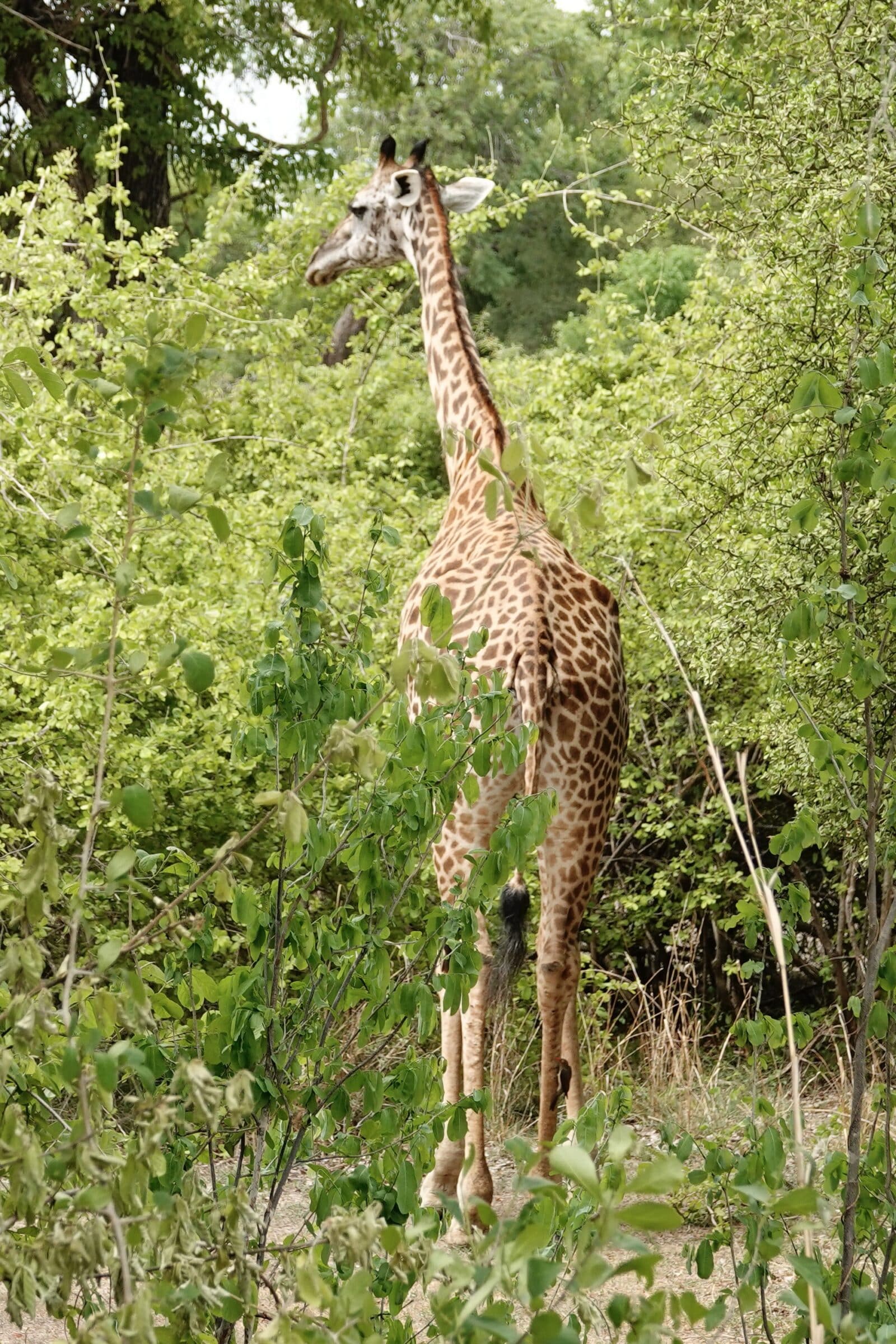
We end the safari with a joint cup of coffee.
Zambia, our conclusions
We had a wonderful time during the overlanding in Zambia. It is of course obvious that we make comparisons with the previous countries we visited, mainly in West Africa.
Zambia is really a different country in terms of development. The country is “richer” in many areas. It is a major tourist attraction with the Victoria Falls. But a number of national parks are also fantastic to visit. Wildlife is abundant, even outside the parks.
We spent the night at many campsites in Zambia - partly out of necessity. And then you just pay 10 to 15 dollars per person per night. If all goes well, you will have a swimming pool available.
Yes, what else can I say... the people are friendly, you see a lot more white people. The white people often come from Zimbabwe or South Africa and own companies or have the better jobs.
Zambia, we could definitely go there again!
Travel tired
All that traveling makes you tired. Processing the thousands of impressions consumes energy.
We therefore decide to spend part of December and Christmas at a lodge near the capital Lusaka.
The Lodge named LUKASA (https://www.lukasa.info/) is owned and managed by a Dutch couple where we felt very much at home for a few weeks. A lovely swimming pool in a fantastic environment, with relaxed, friendly people around us, ensures that we can start 2024 fully rested.
Plan your holiday to Africa here
- Itineraries you can compare + request quotes Africaplus, Africa tailor-made, Djoser, king monkey, rickshaw travel, sawadee en shoestring.
- Flight tickets for Africa you book through Skyscanner.
- Hostels, Hotels and Resorts in Africa you book Booking.com.
- Rental cars : Sunnycars en rental cars.
- Tours and Activities in Africa you book through GetYourGuide.
- travel items such as suitcases, bags and more you can buy at Bol.com.
- SIM cards for Africa you buy extra International sim.
- Parking at the airport you can arrange via Parkos, park care of iParking.


